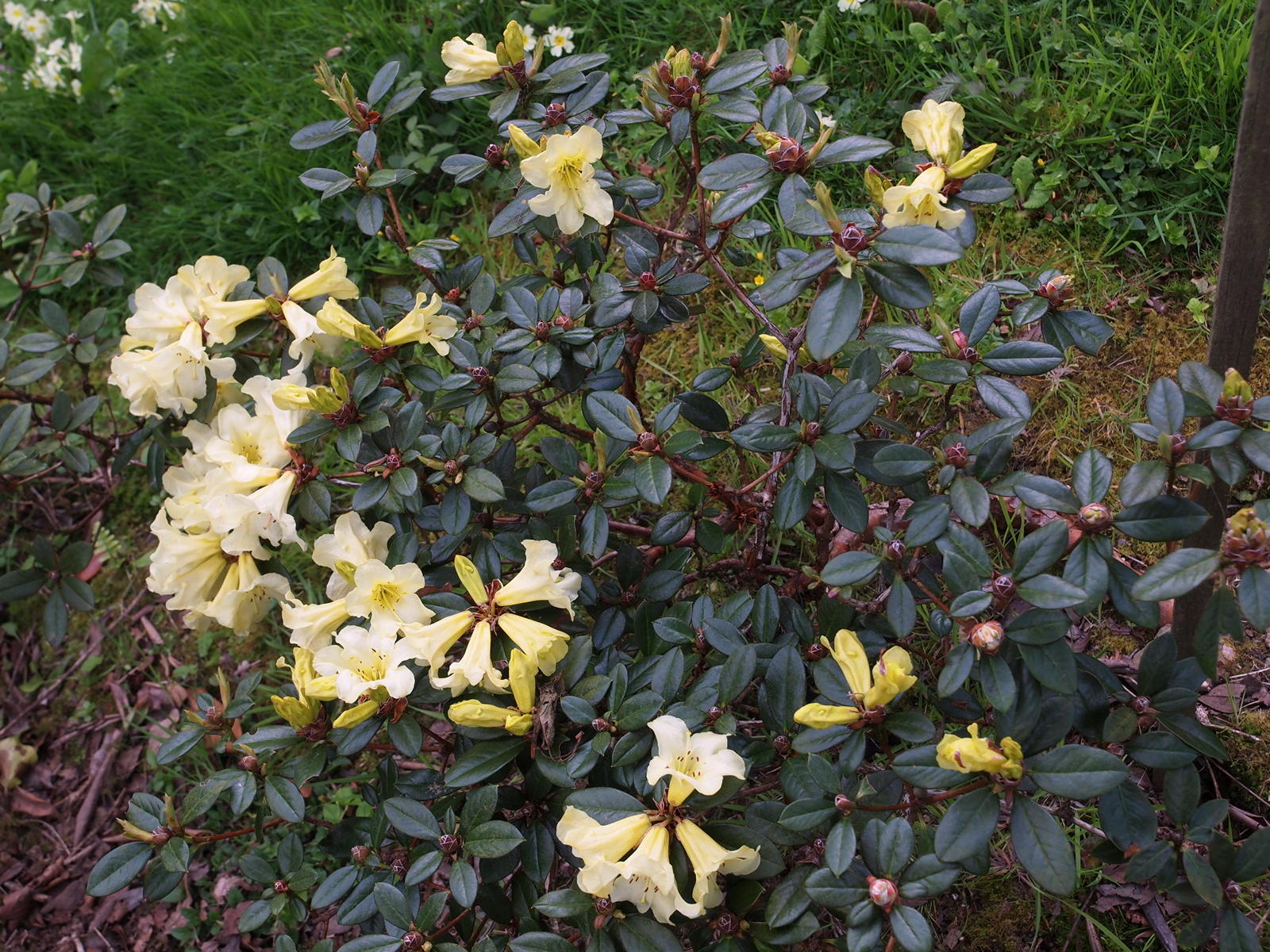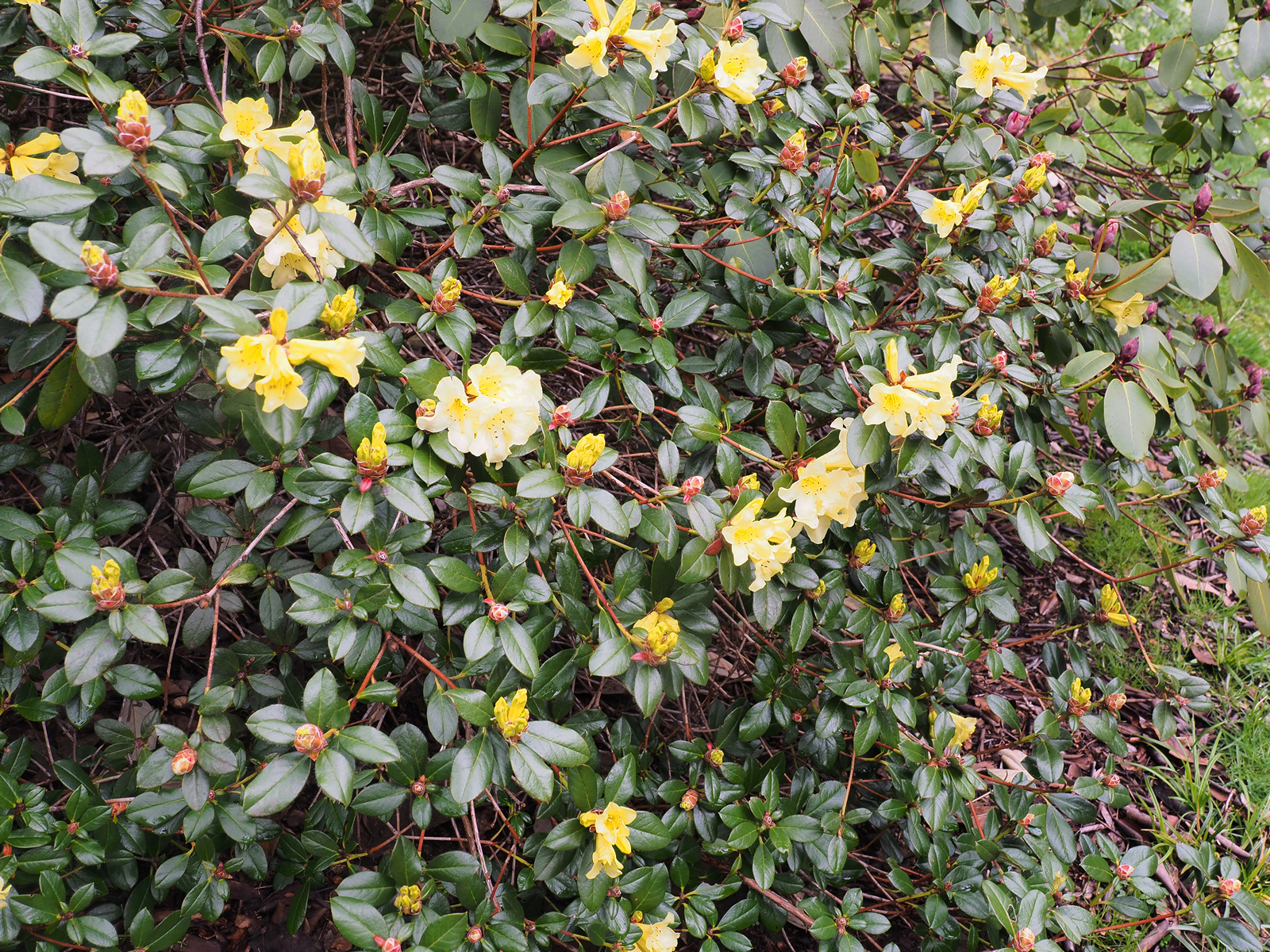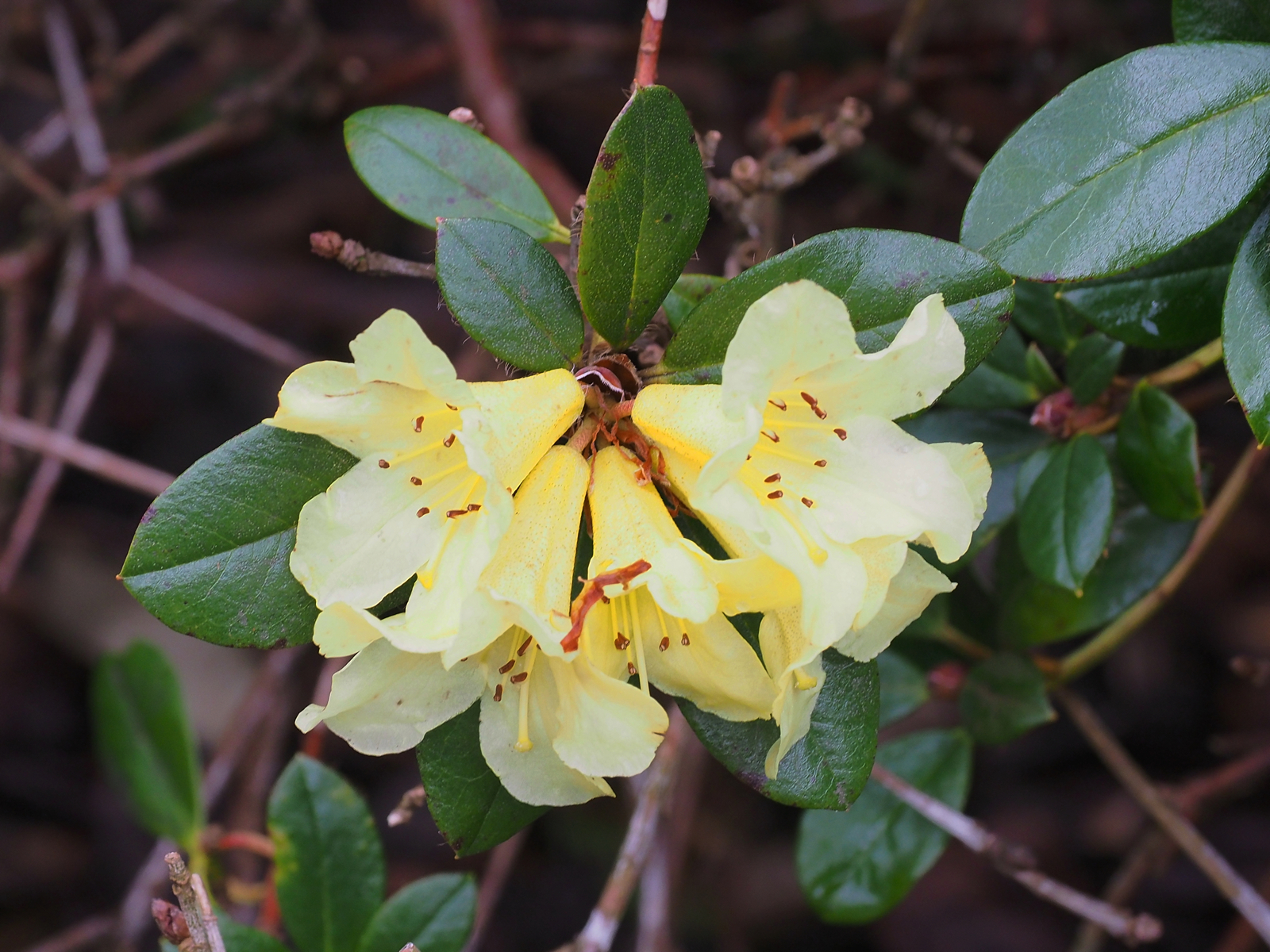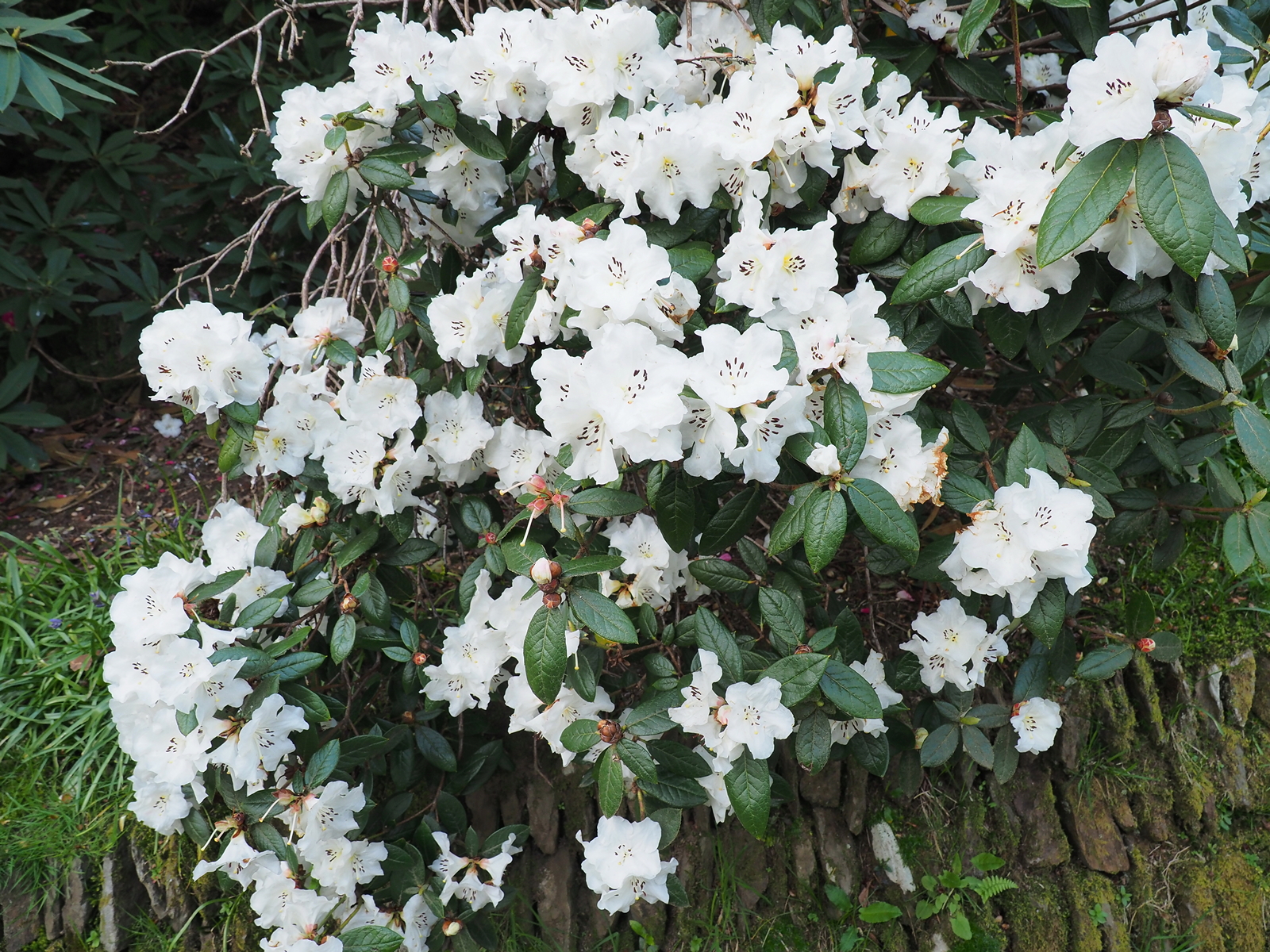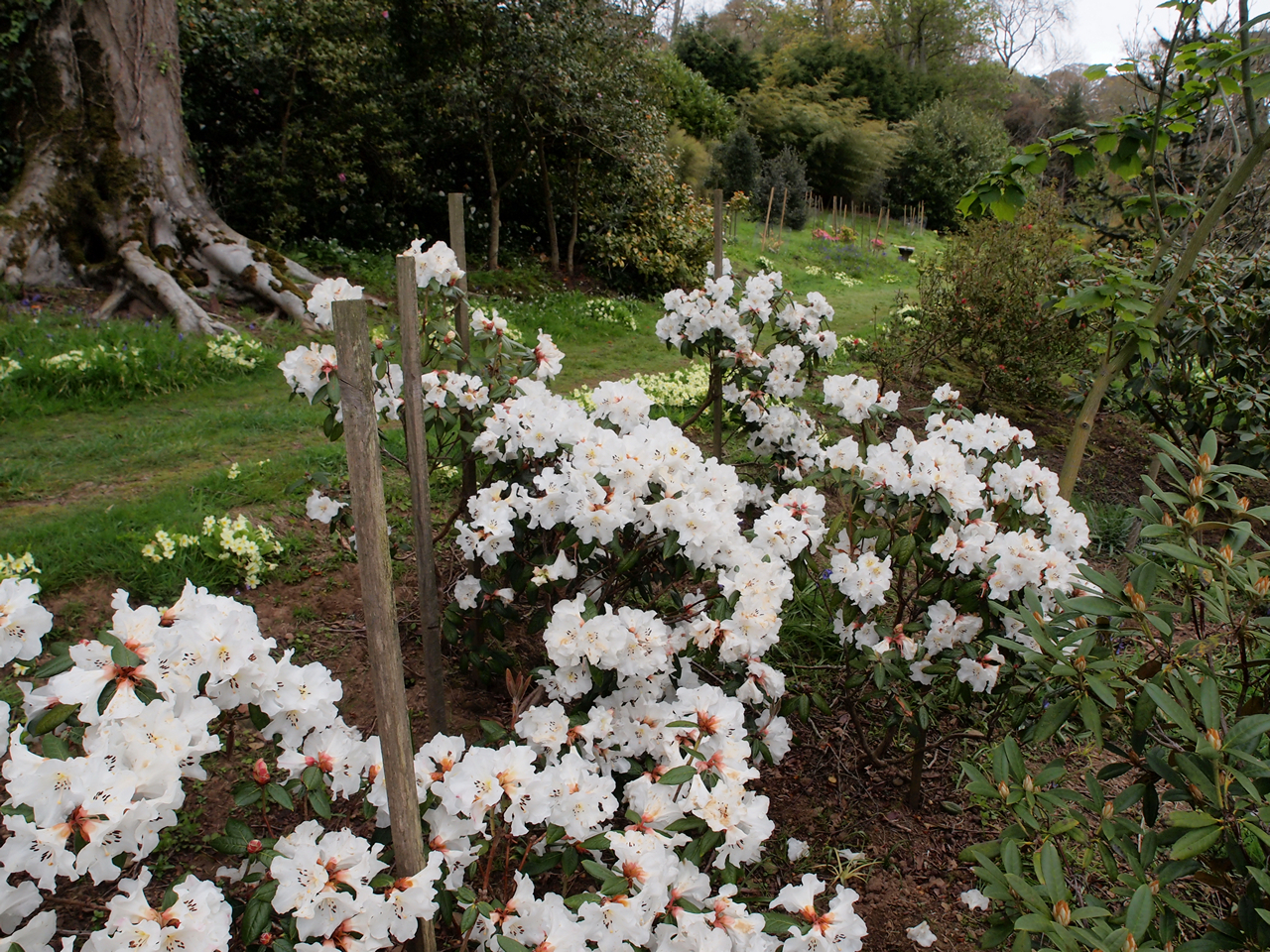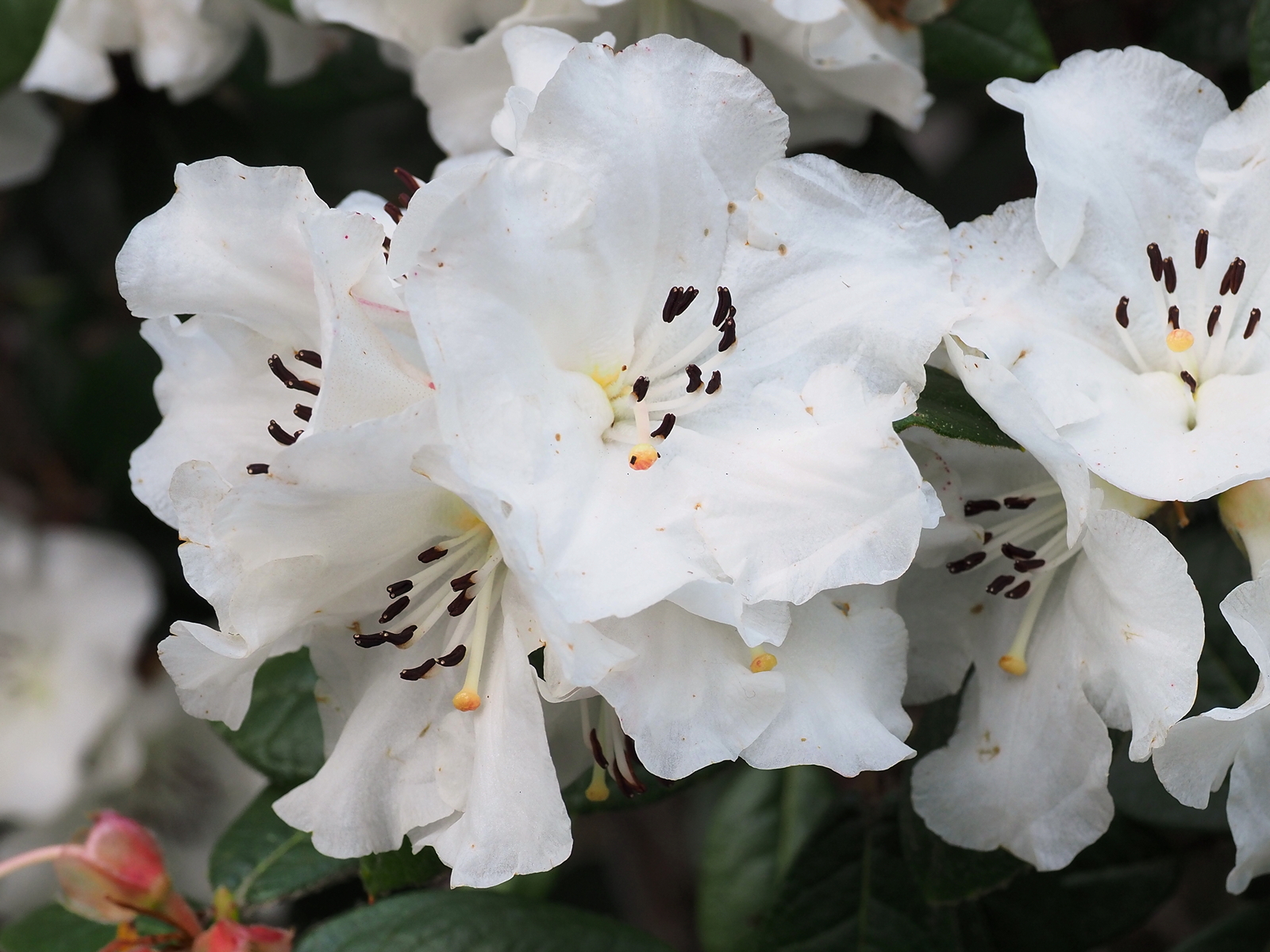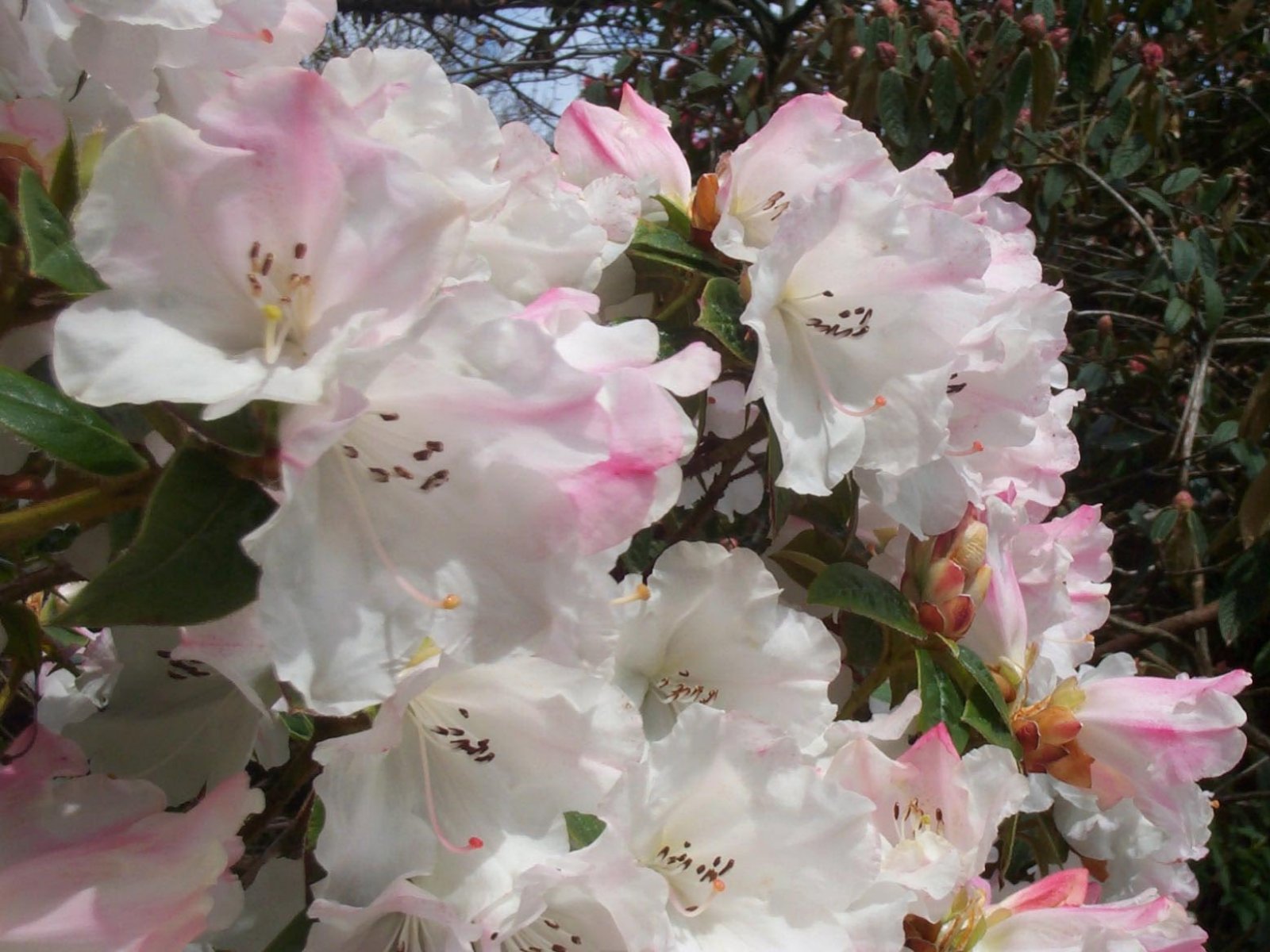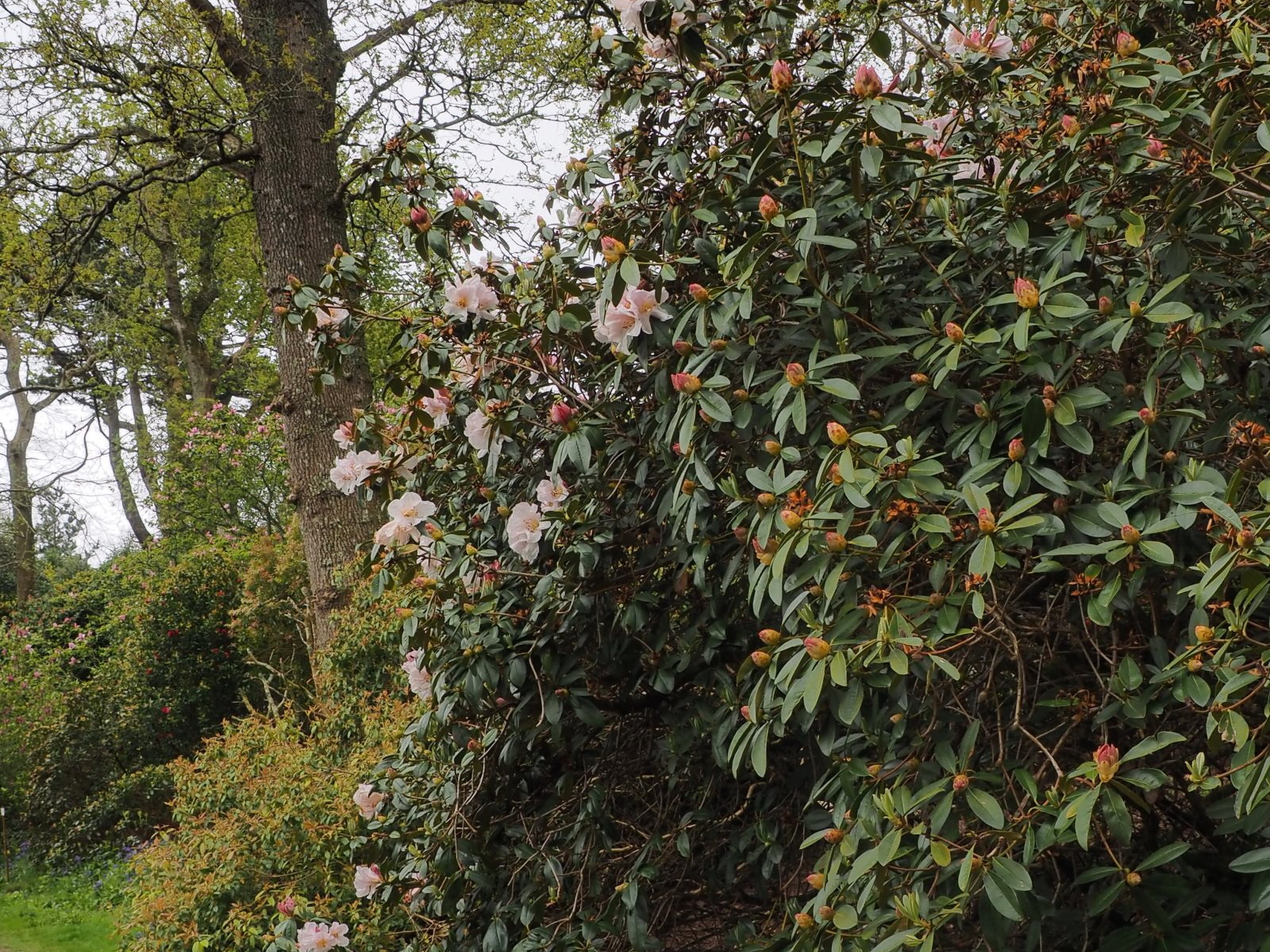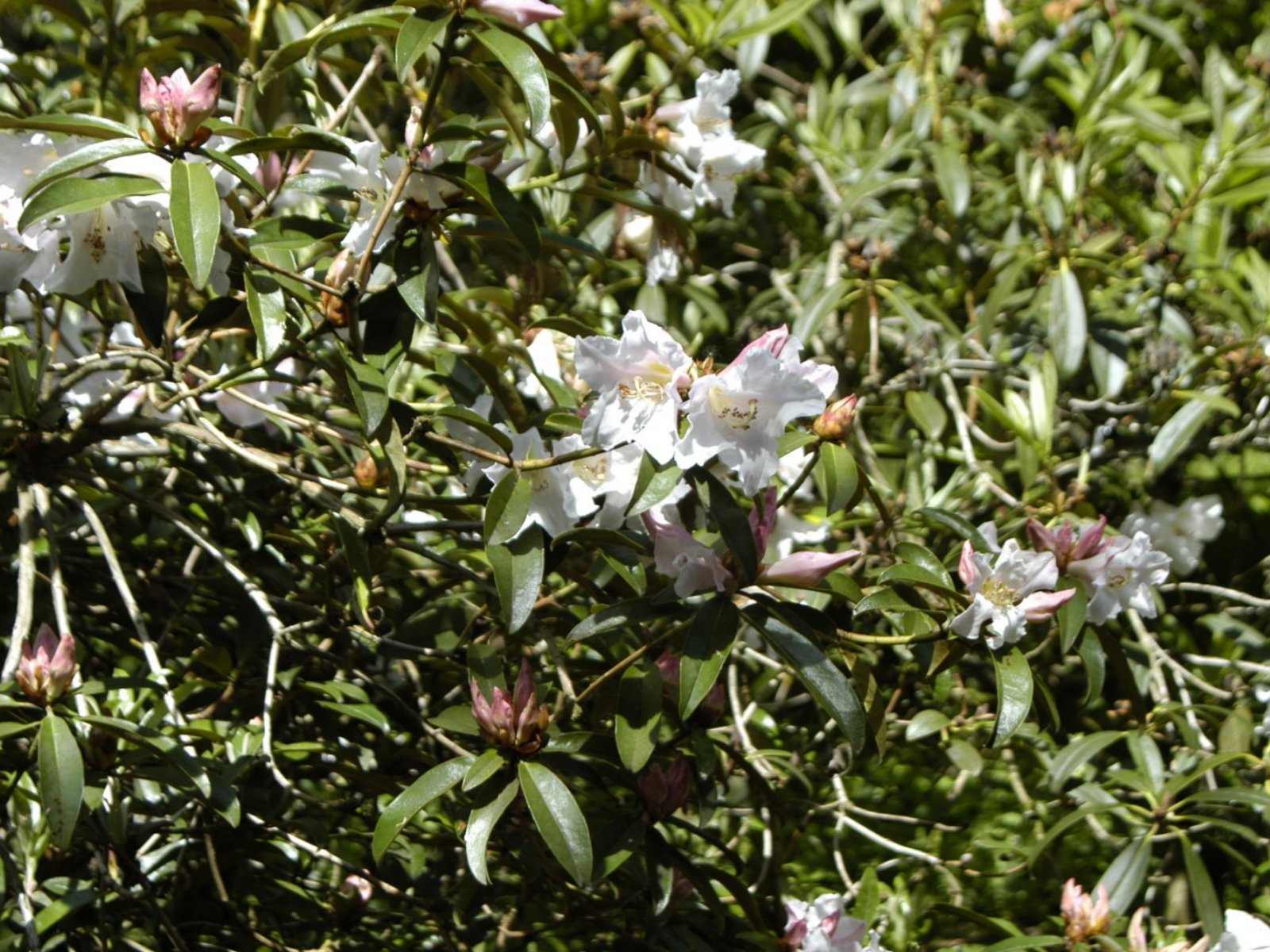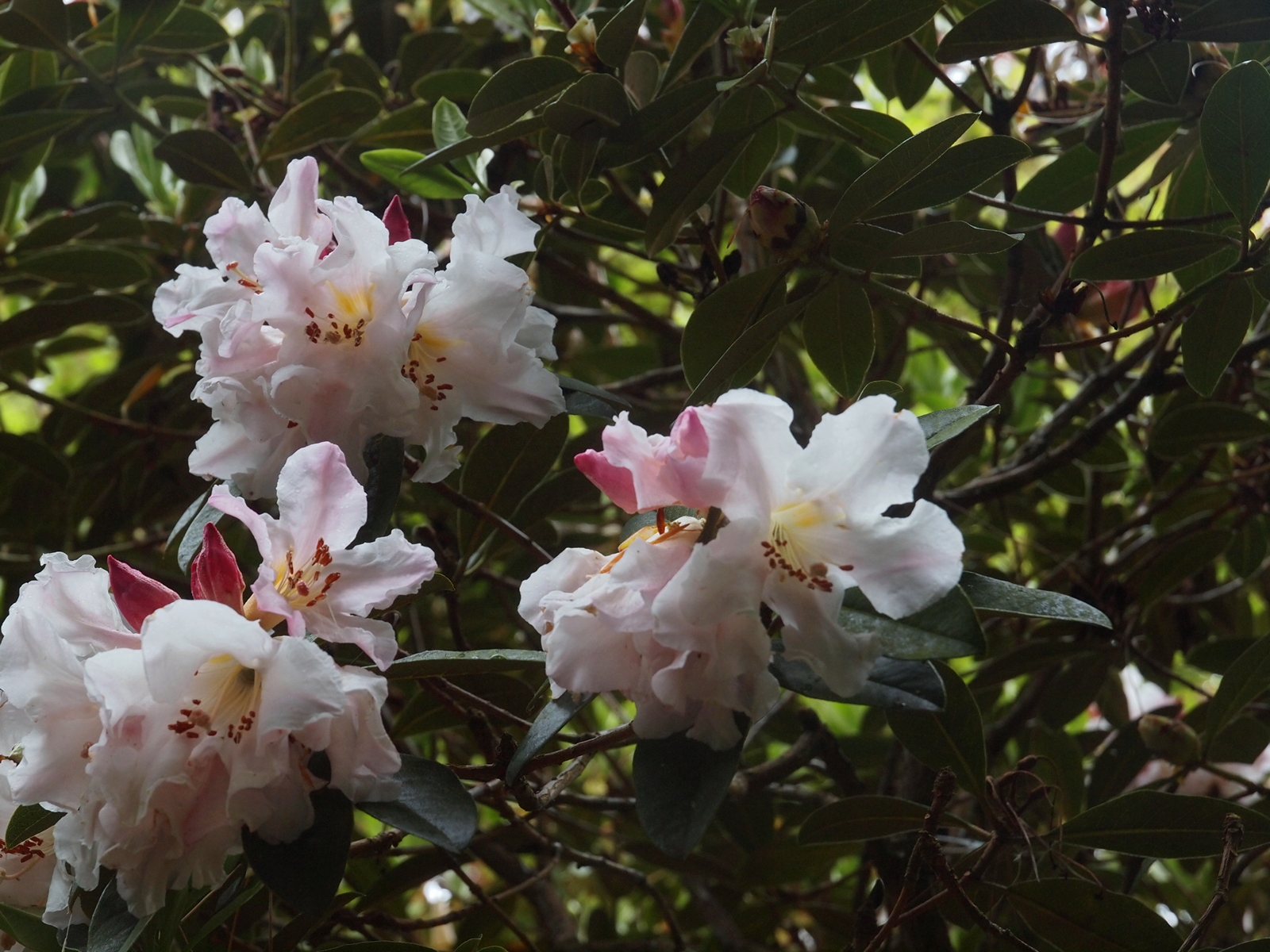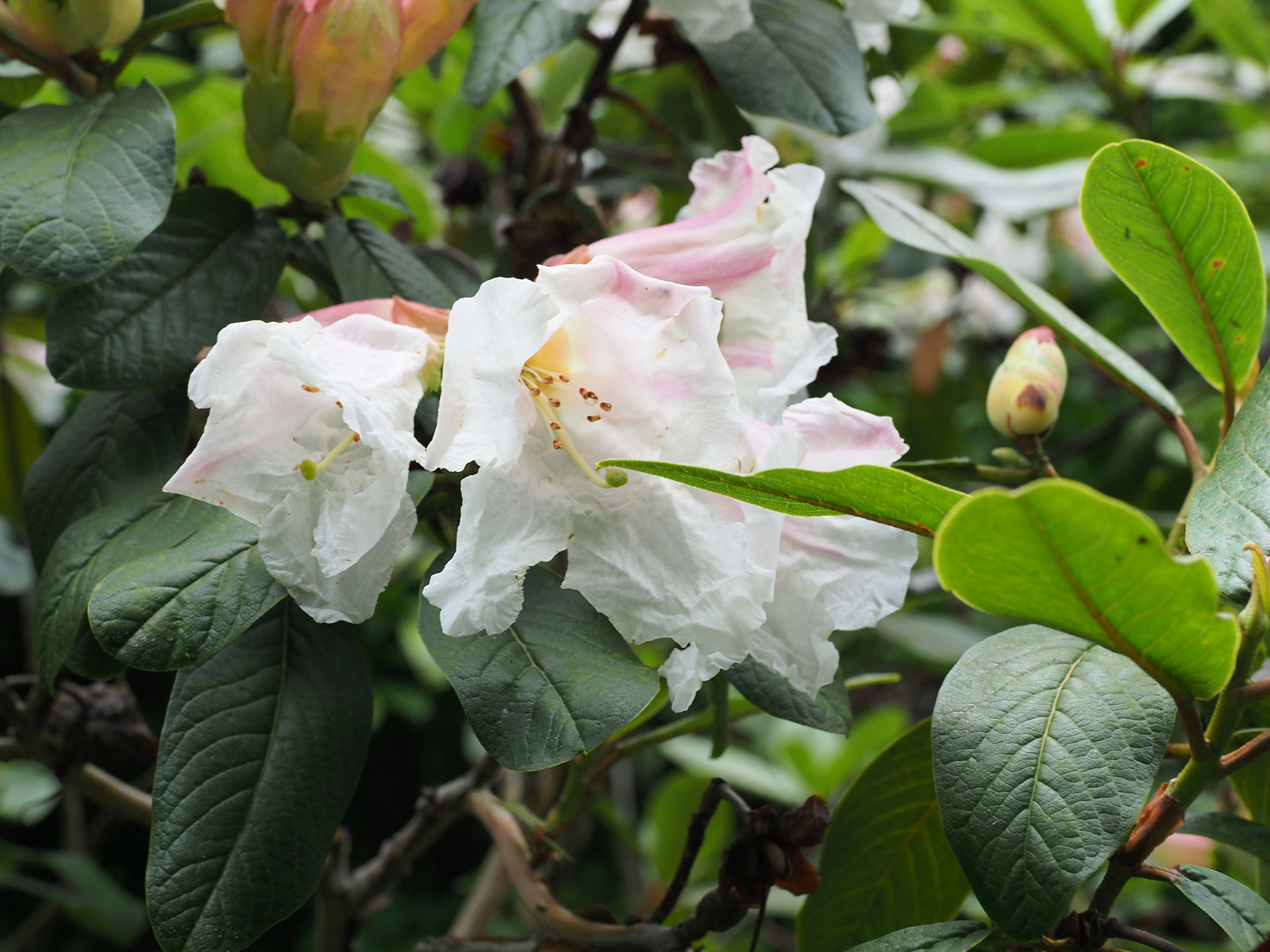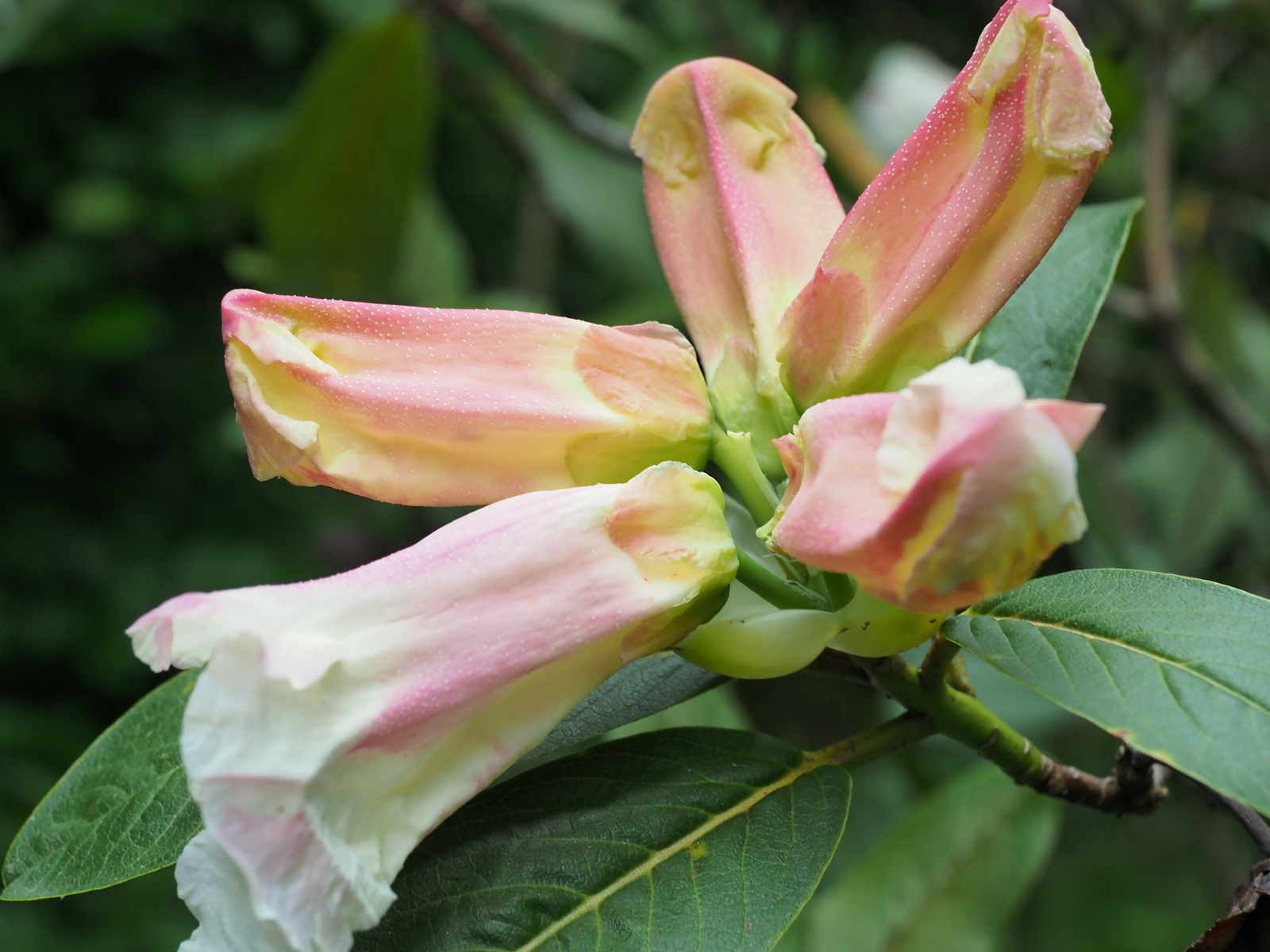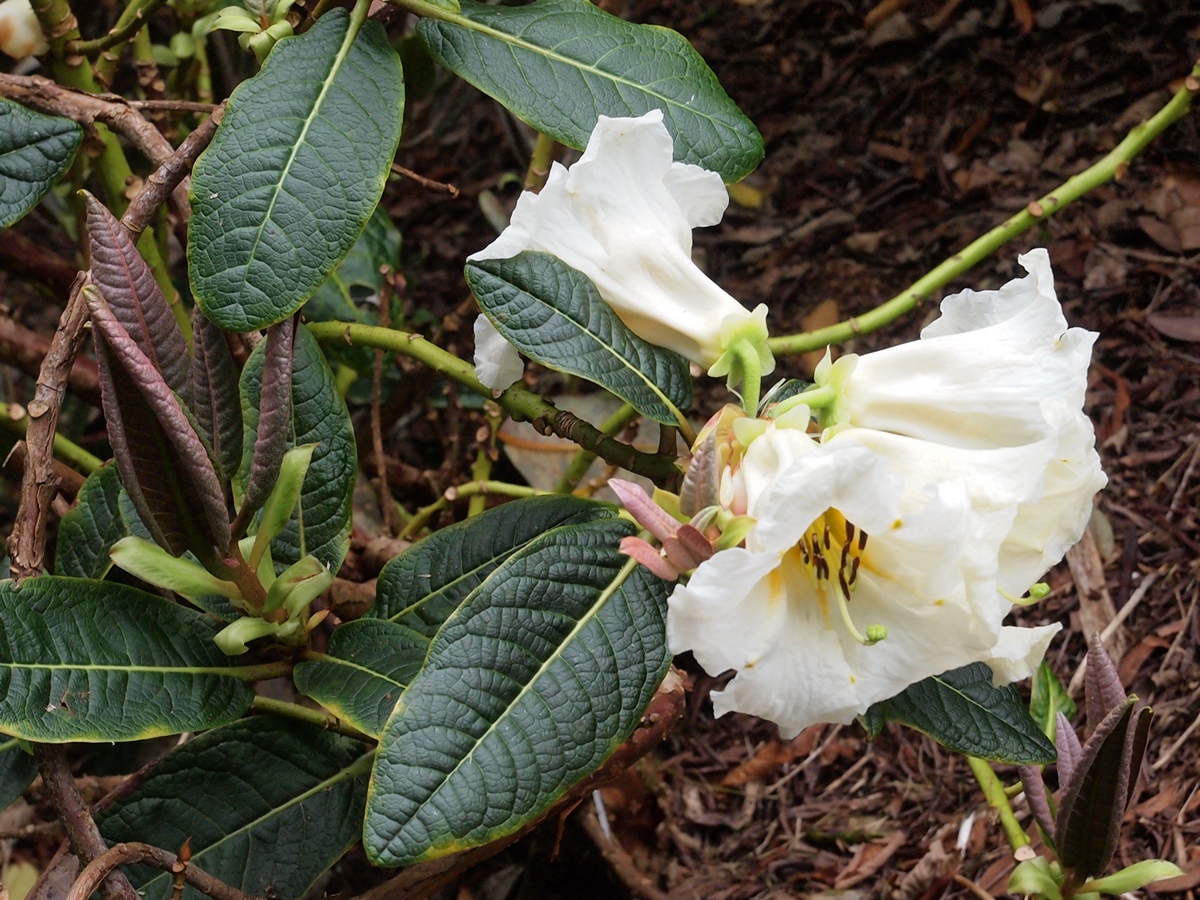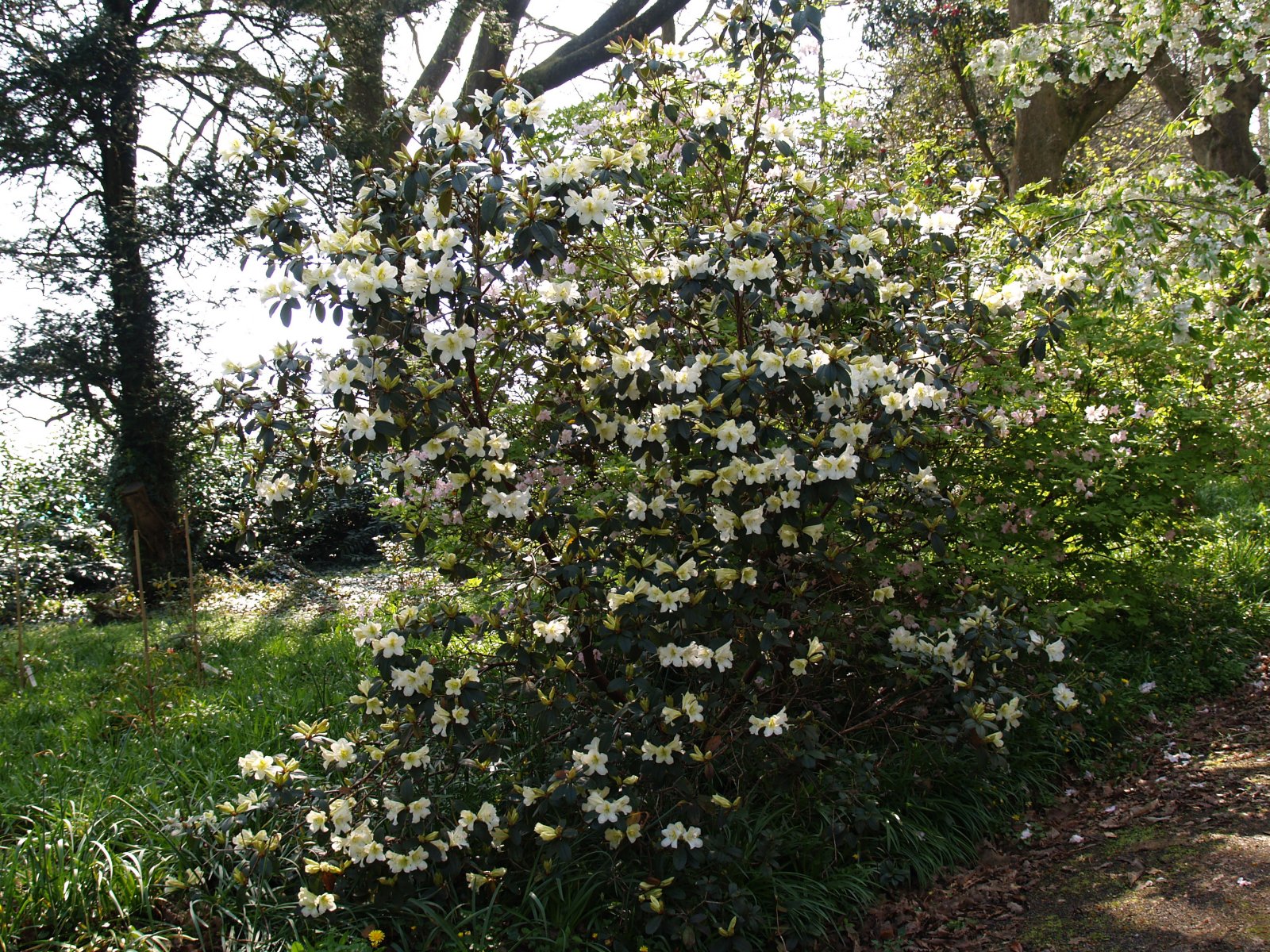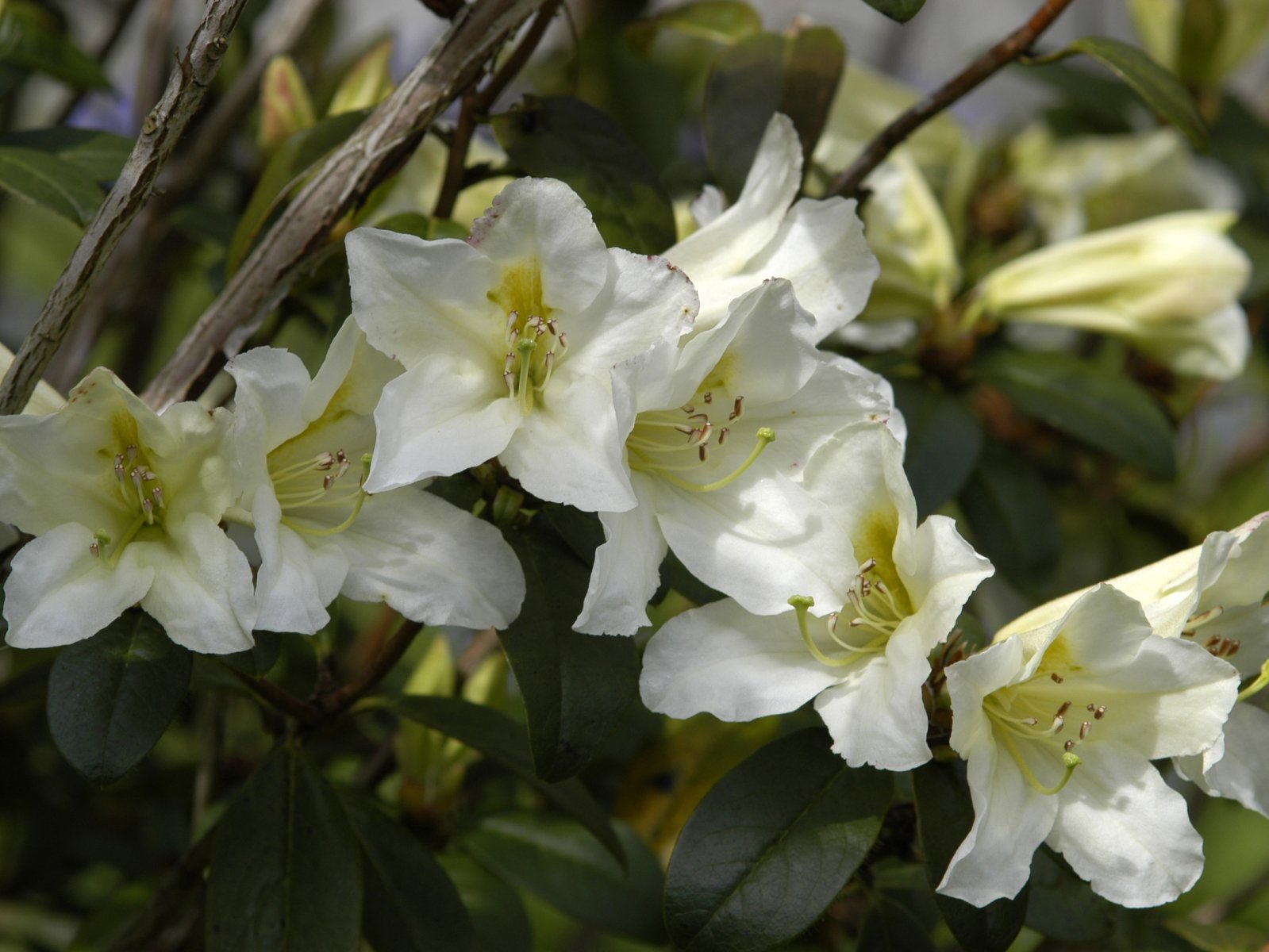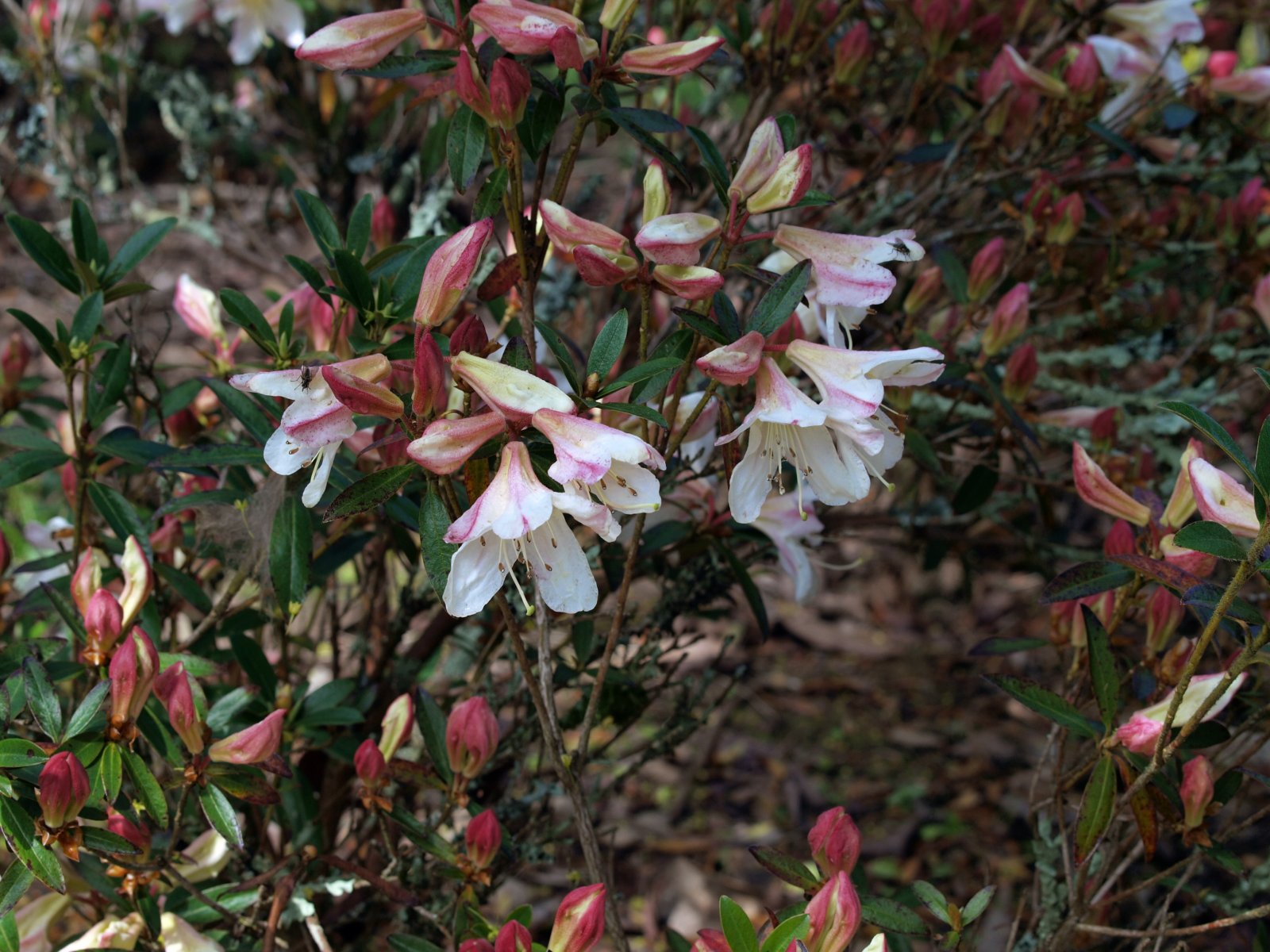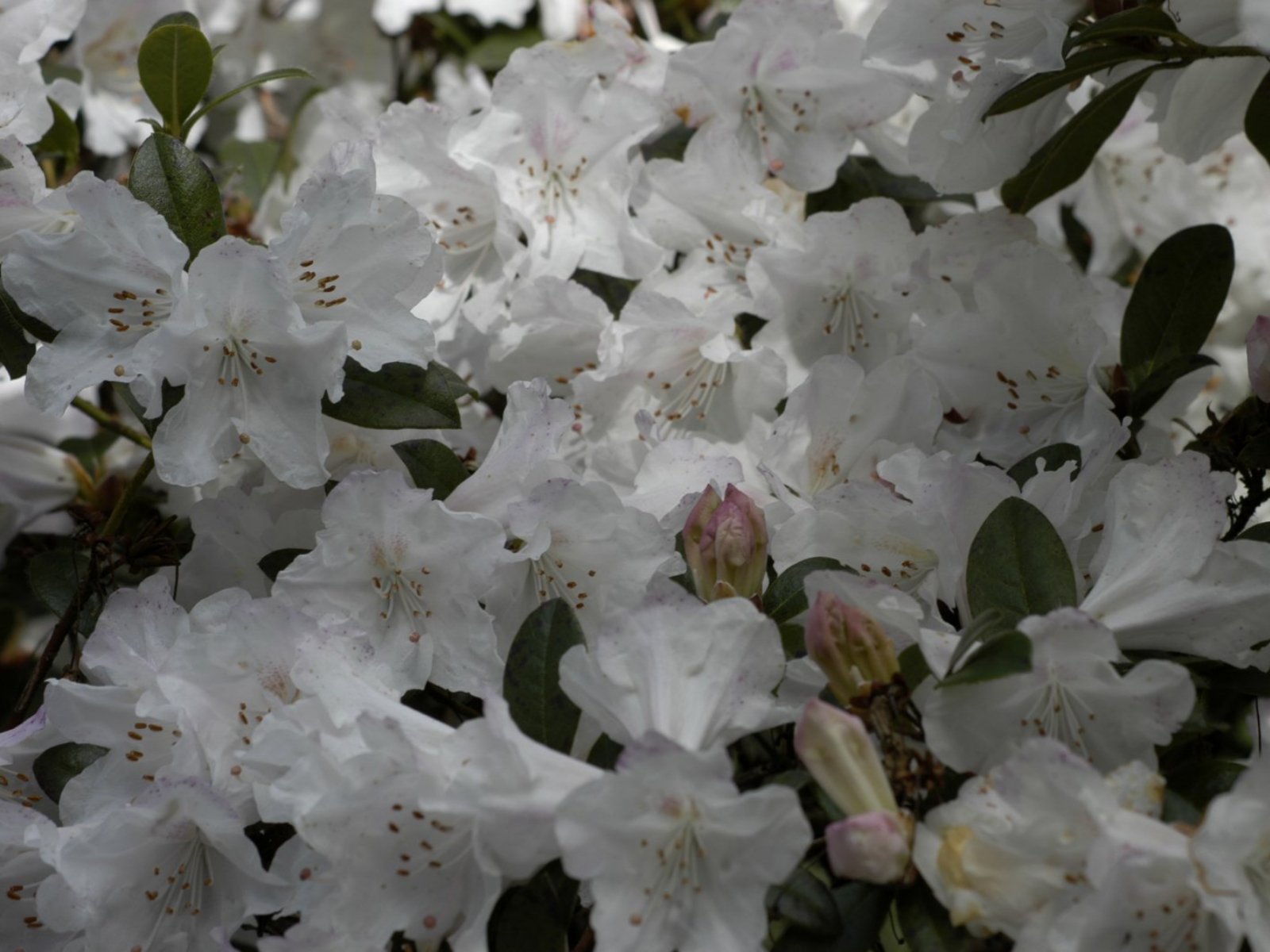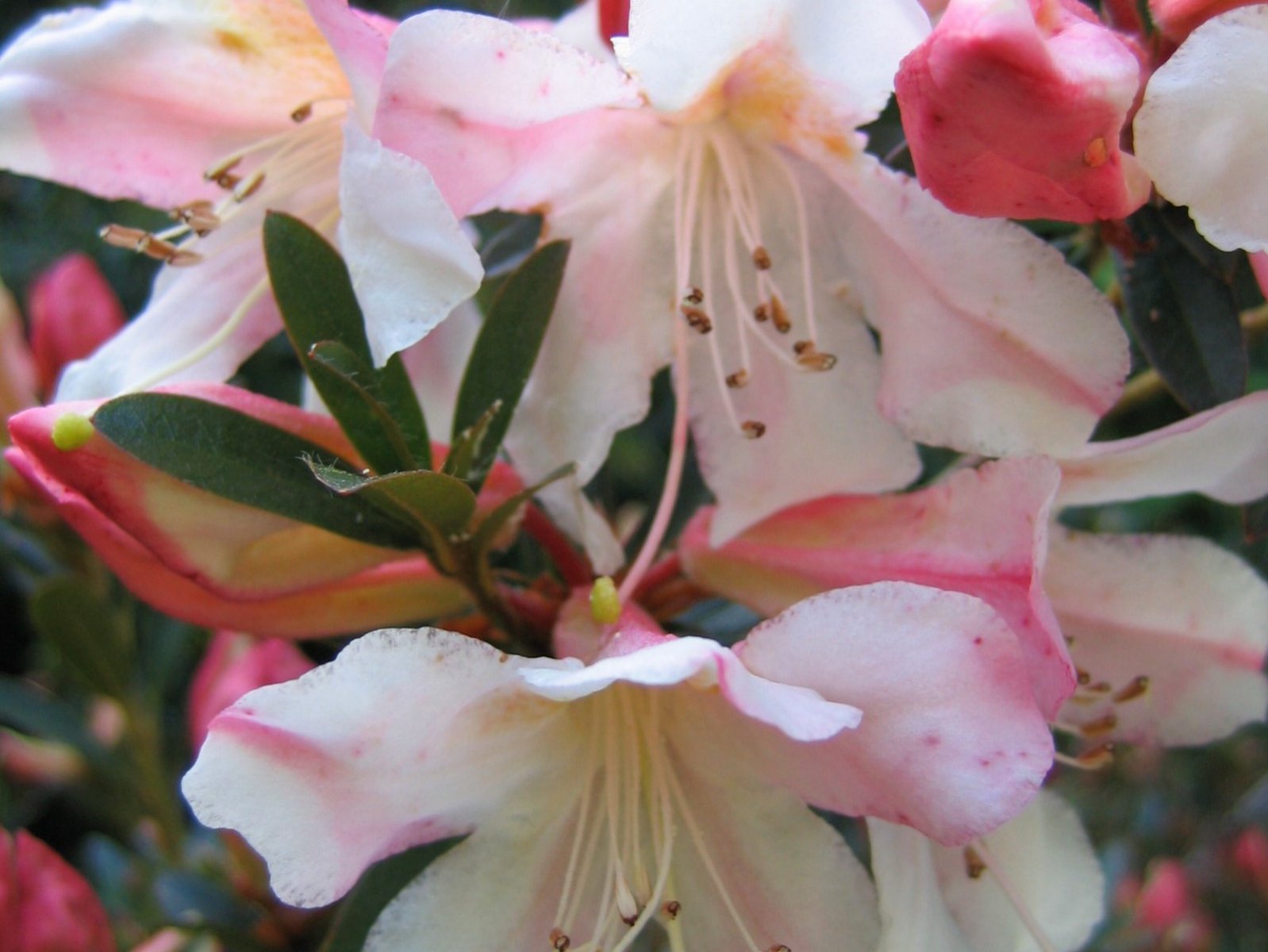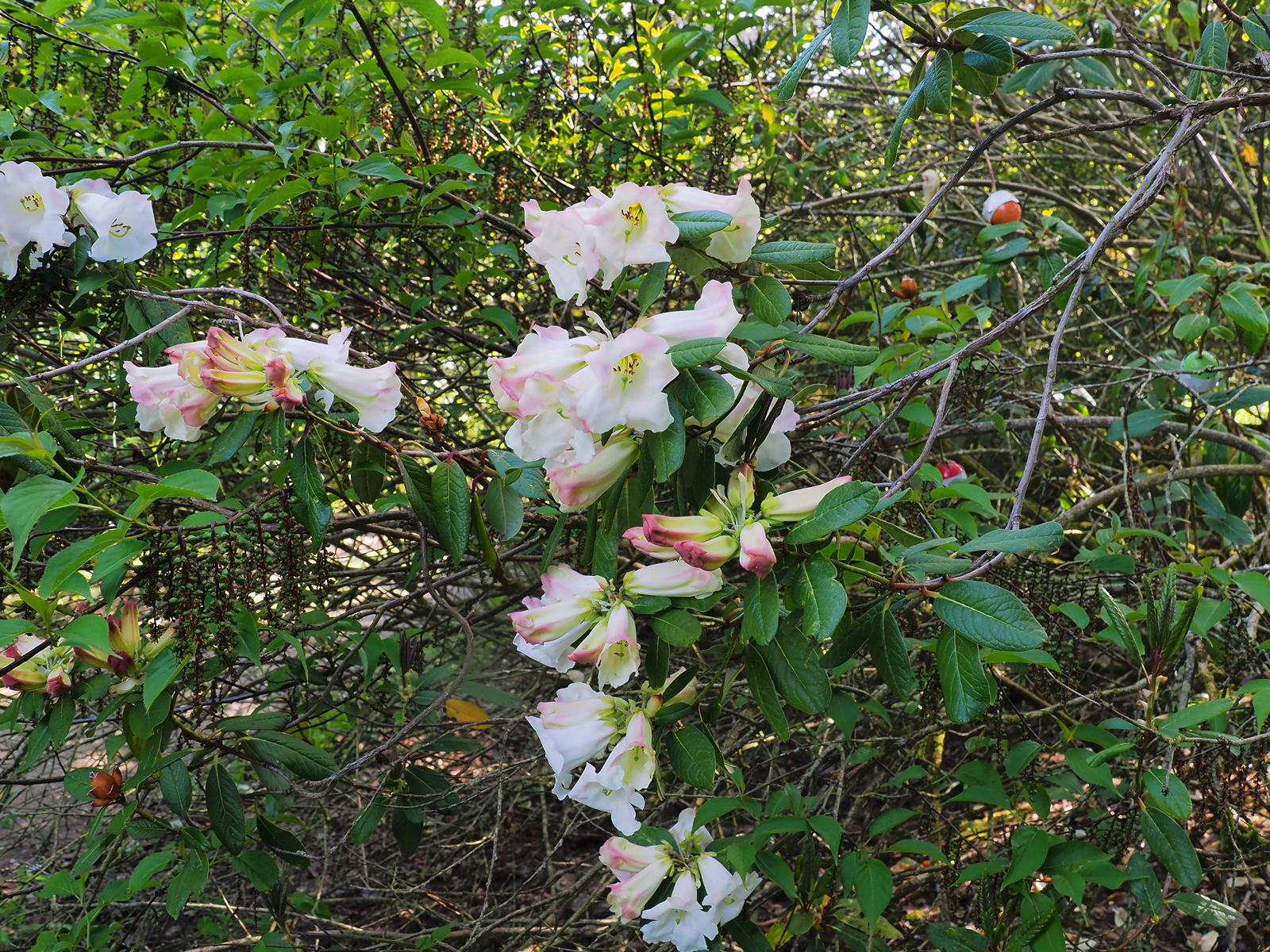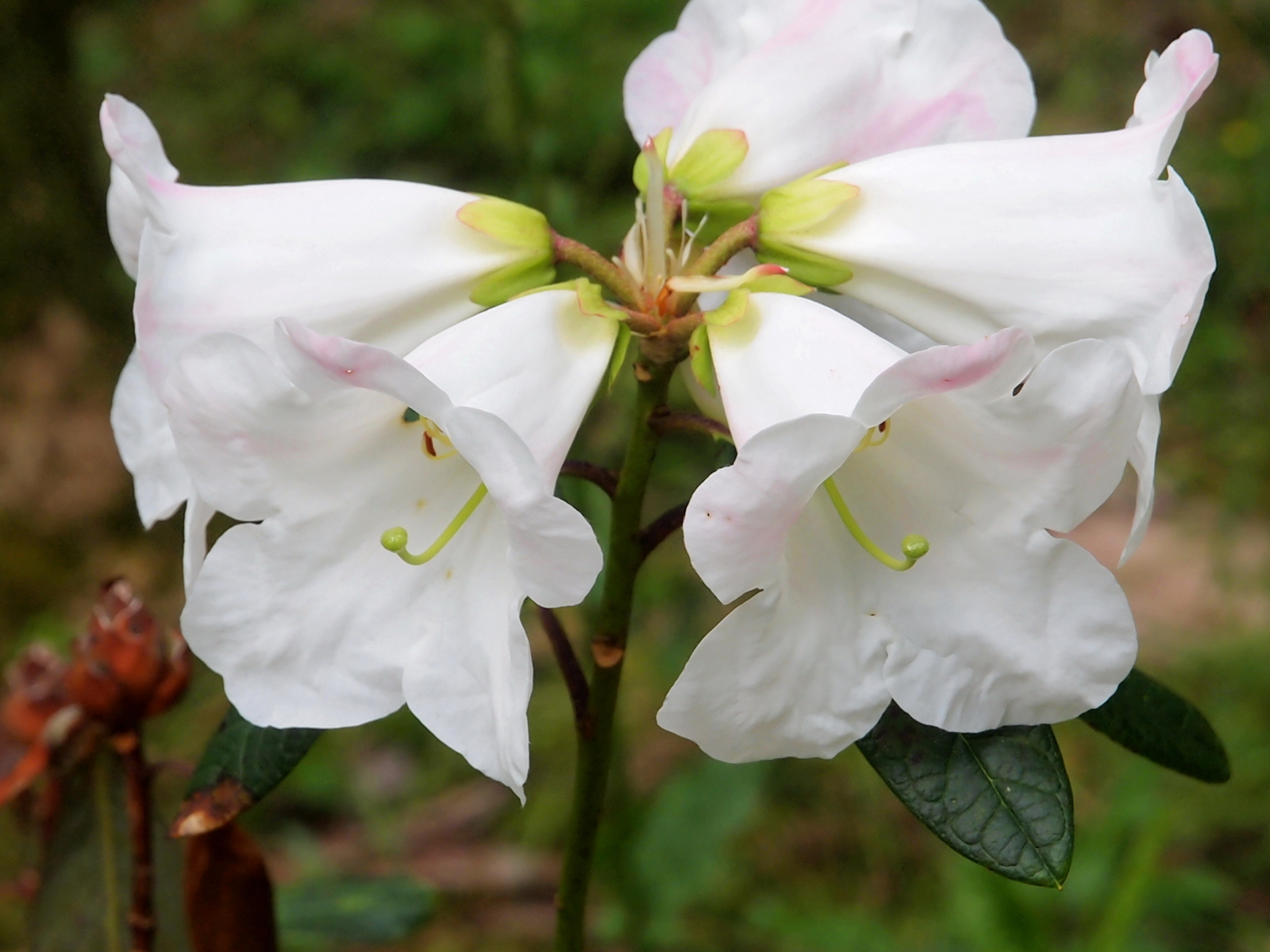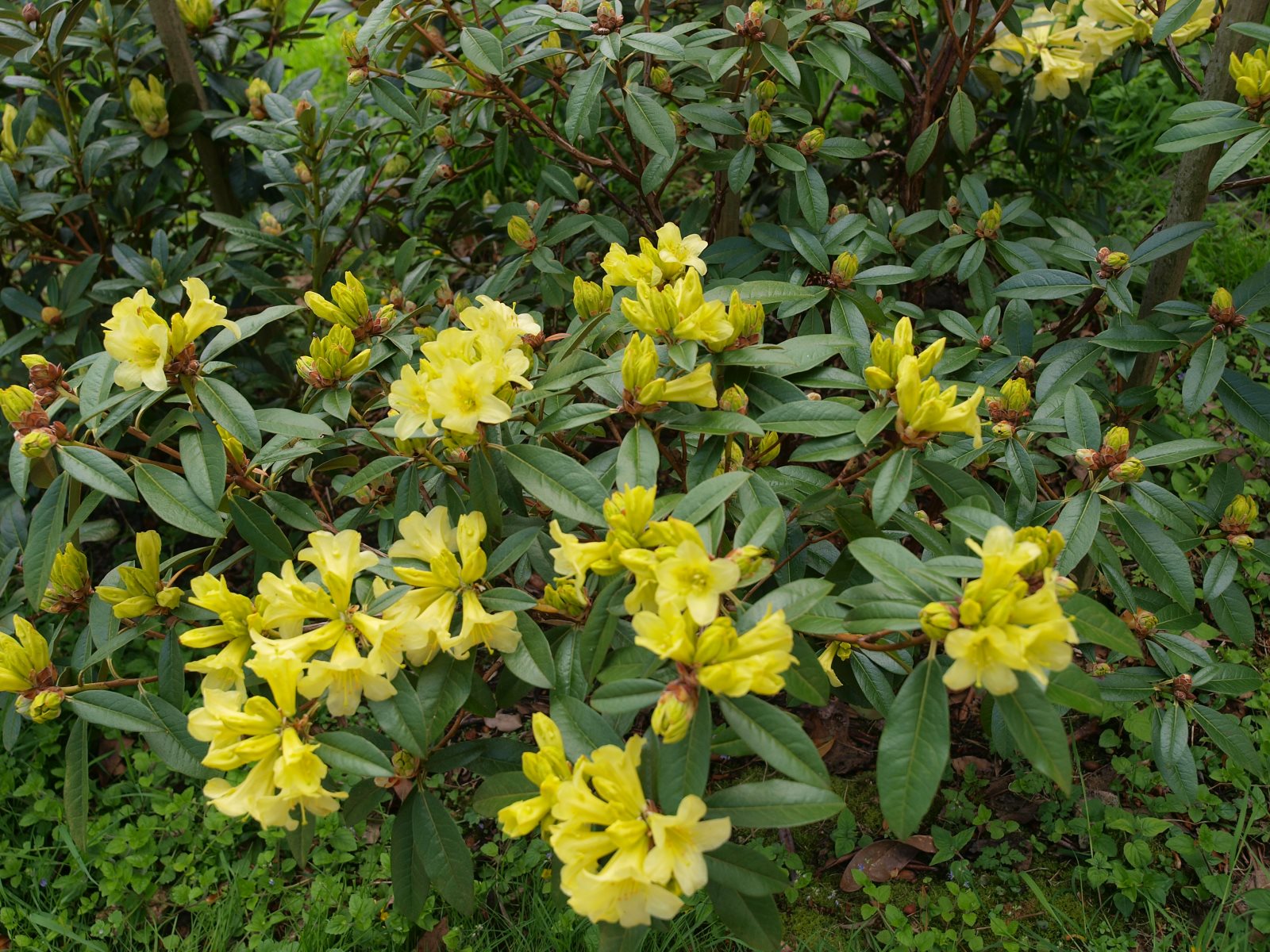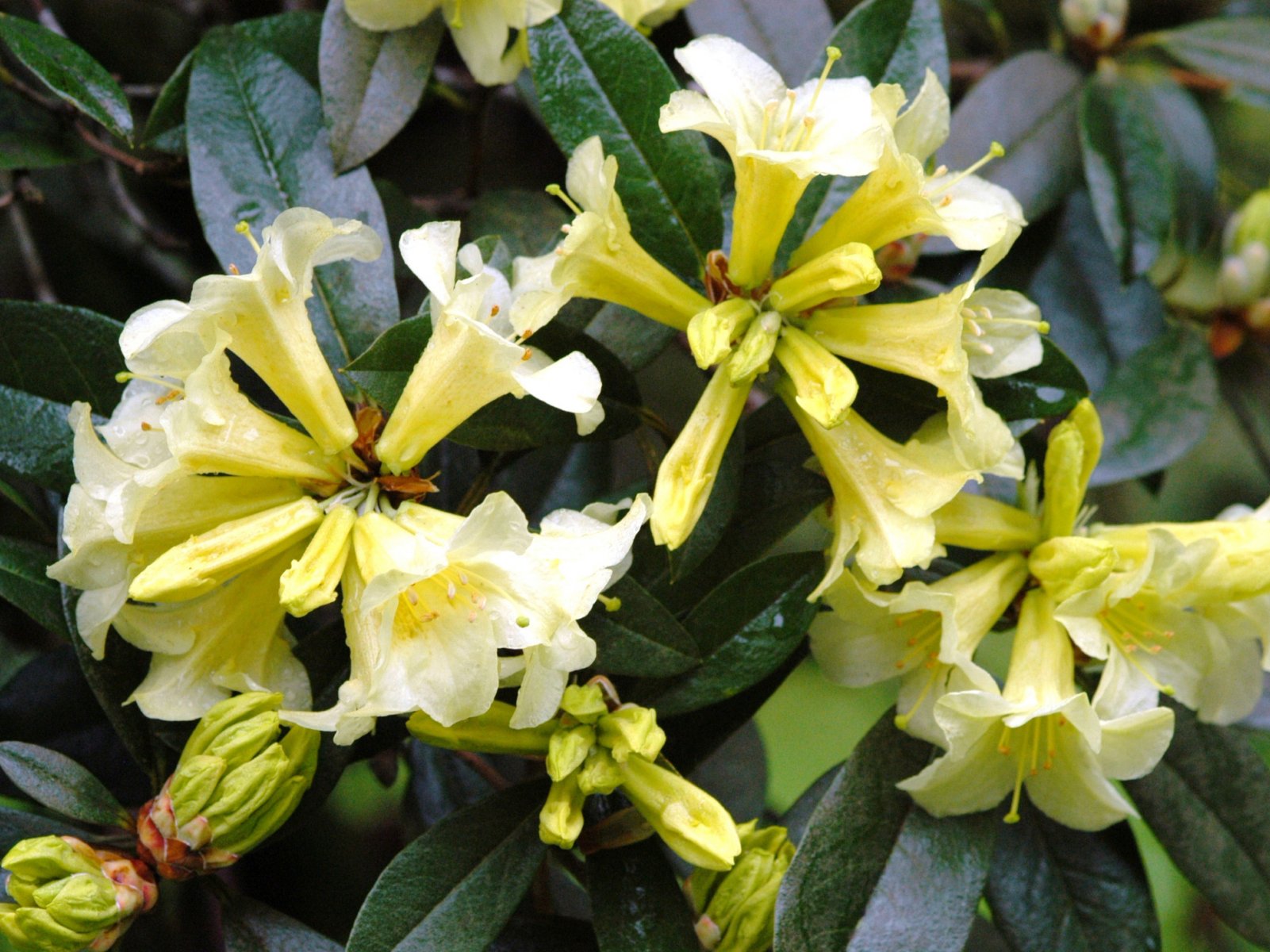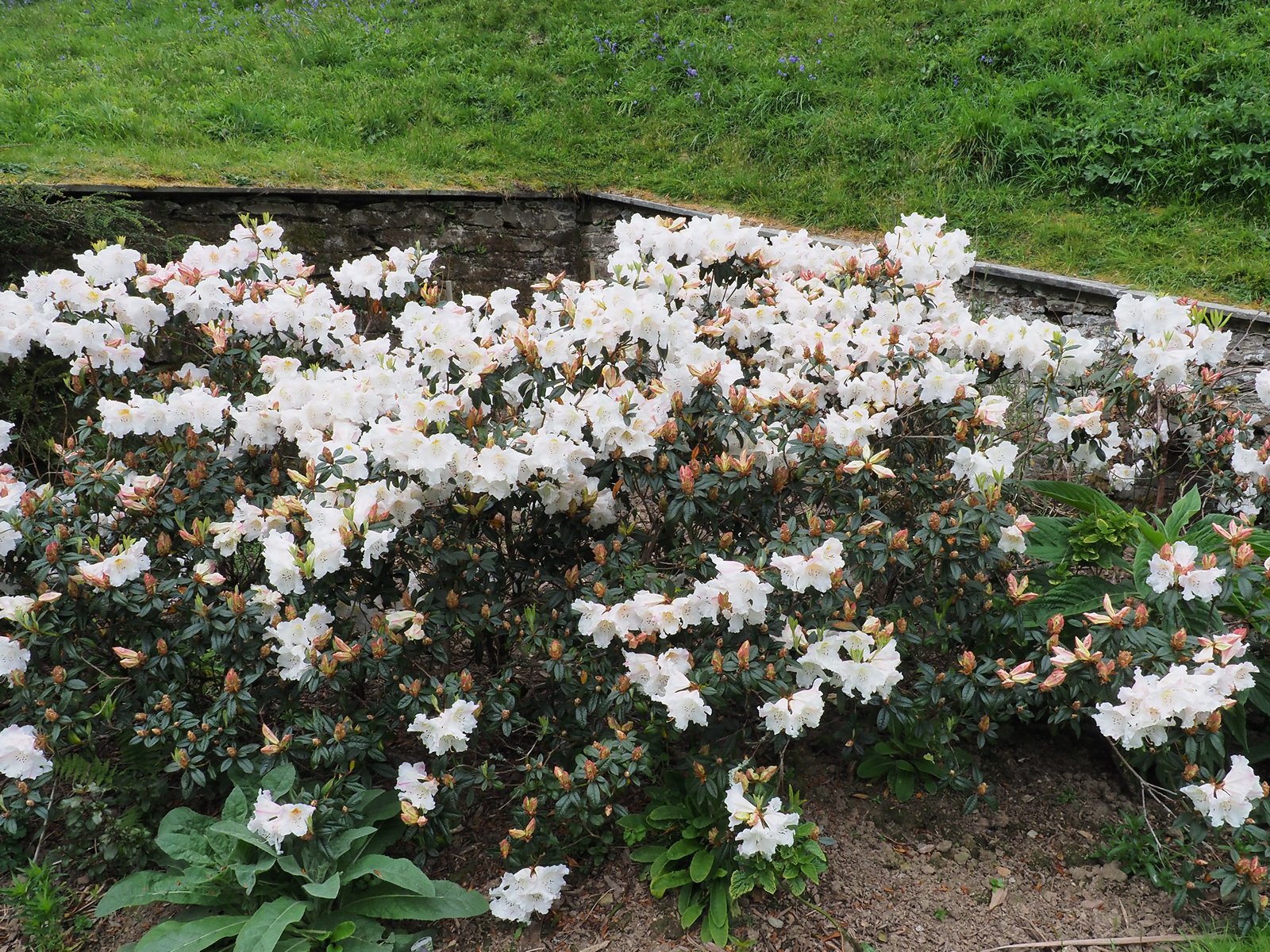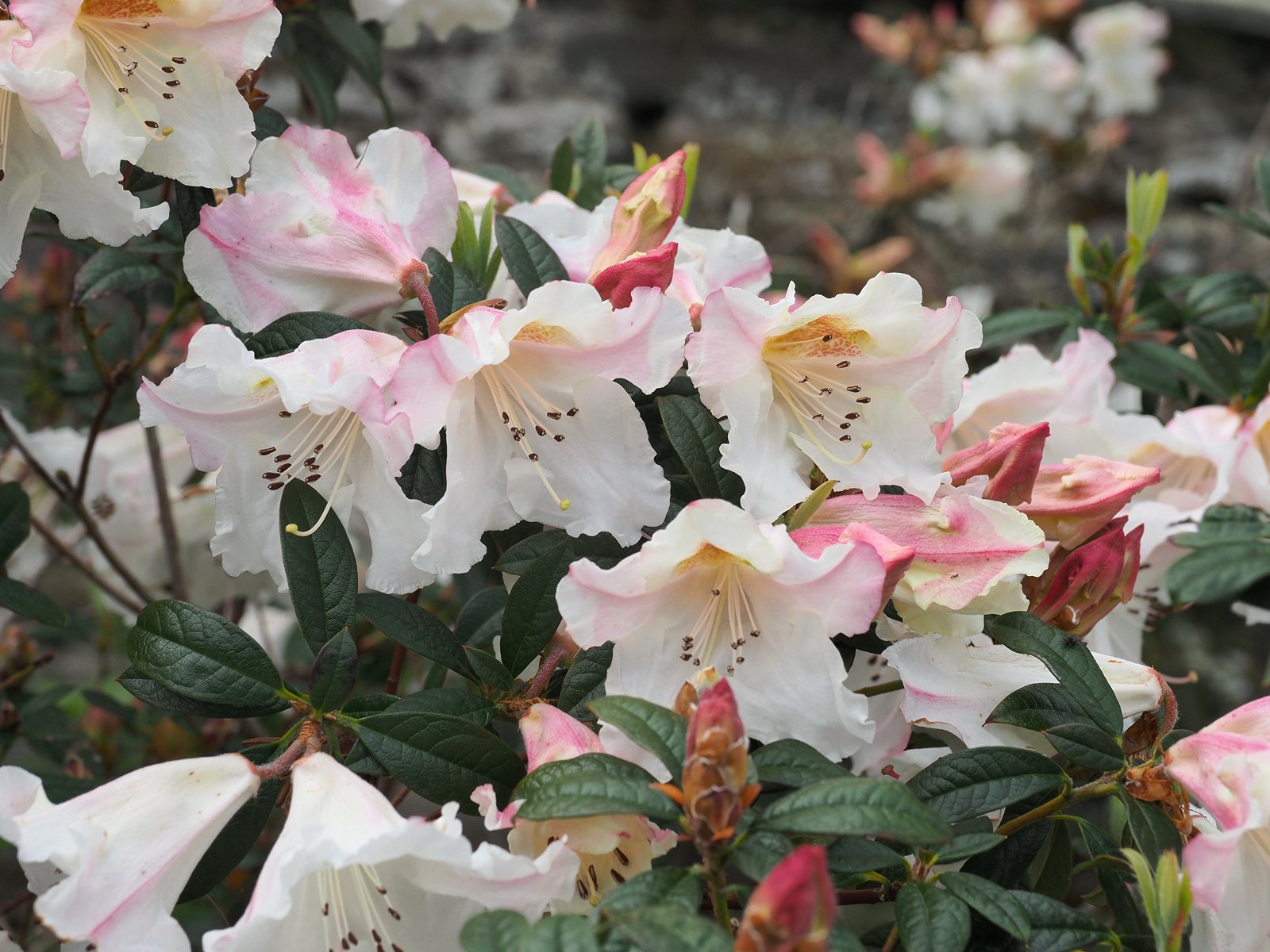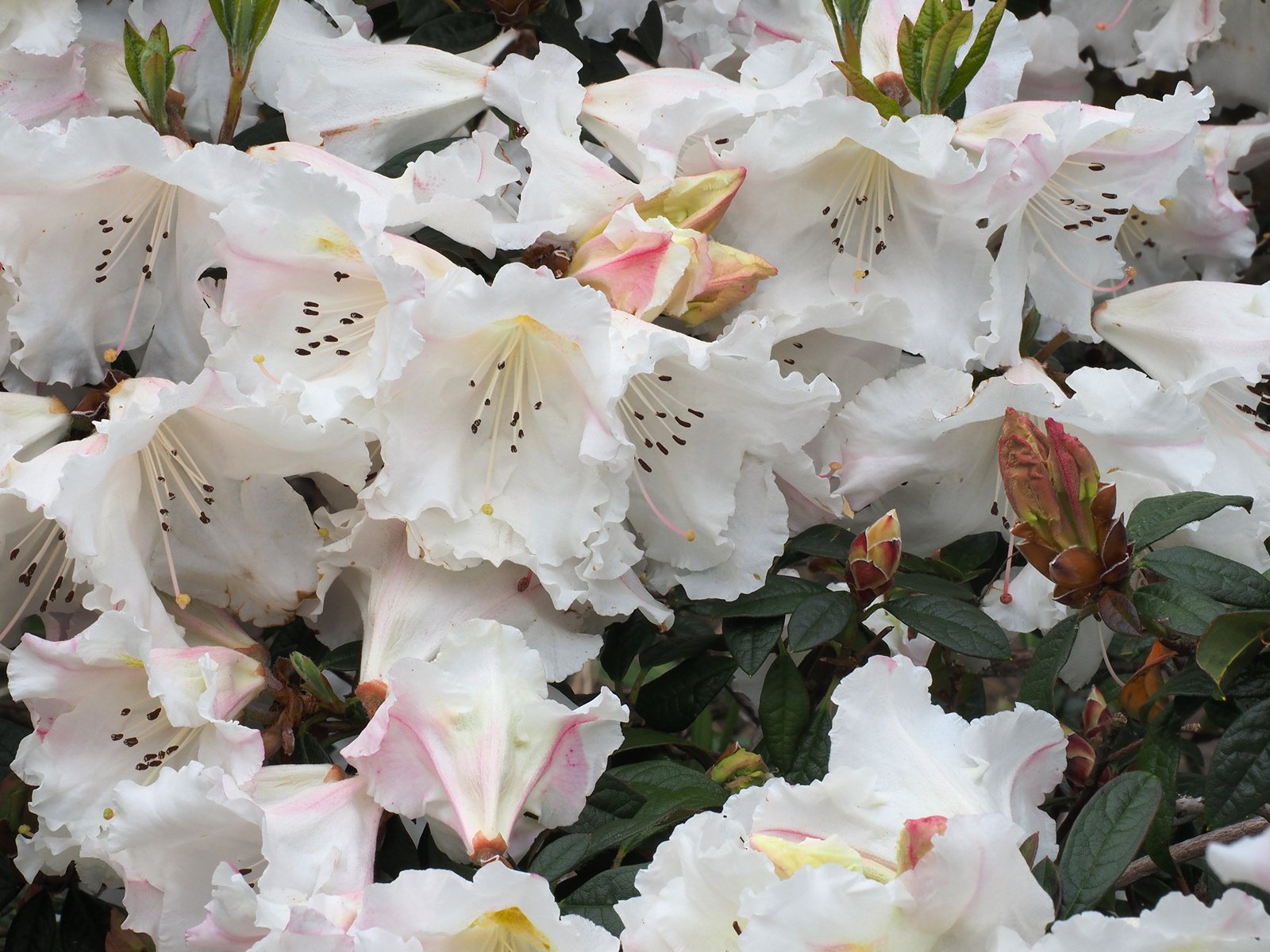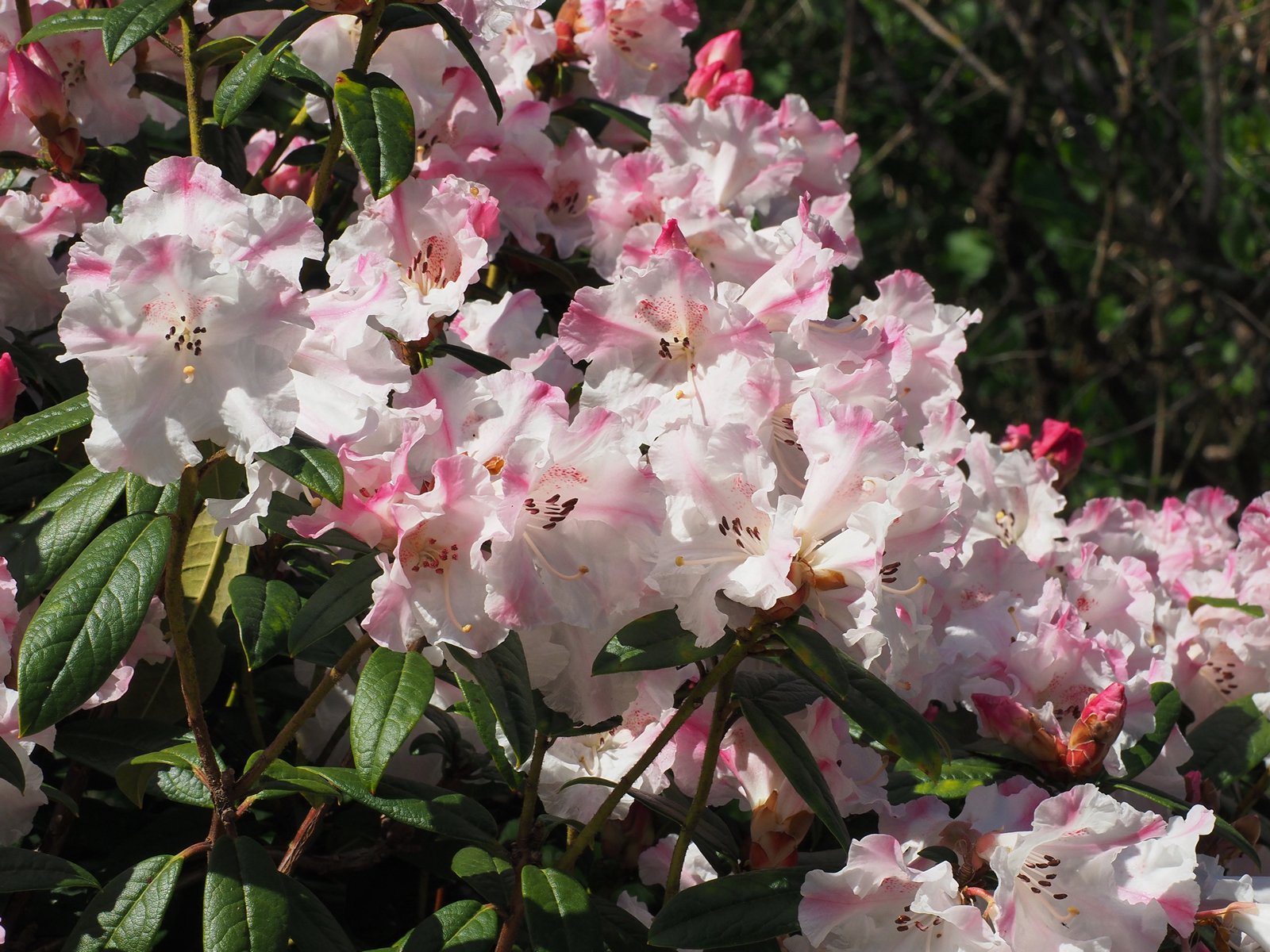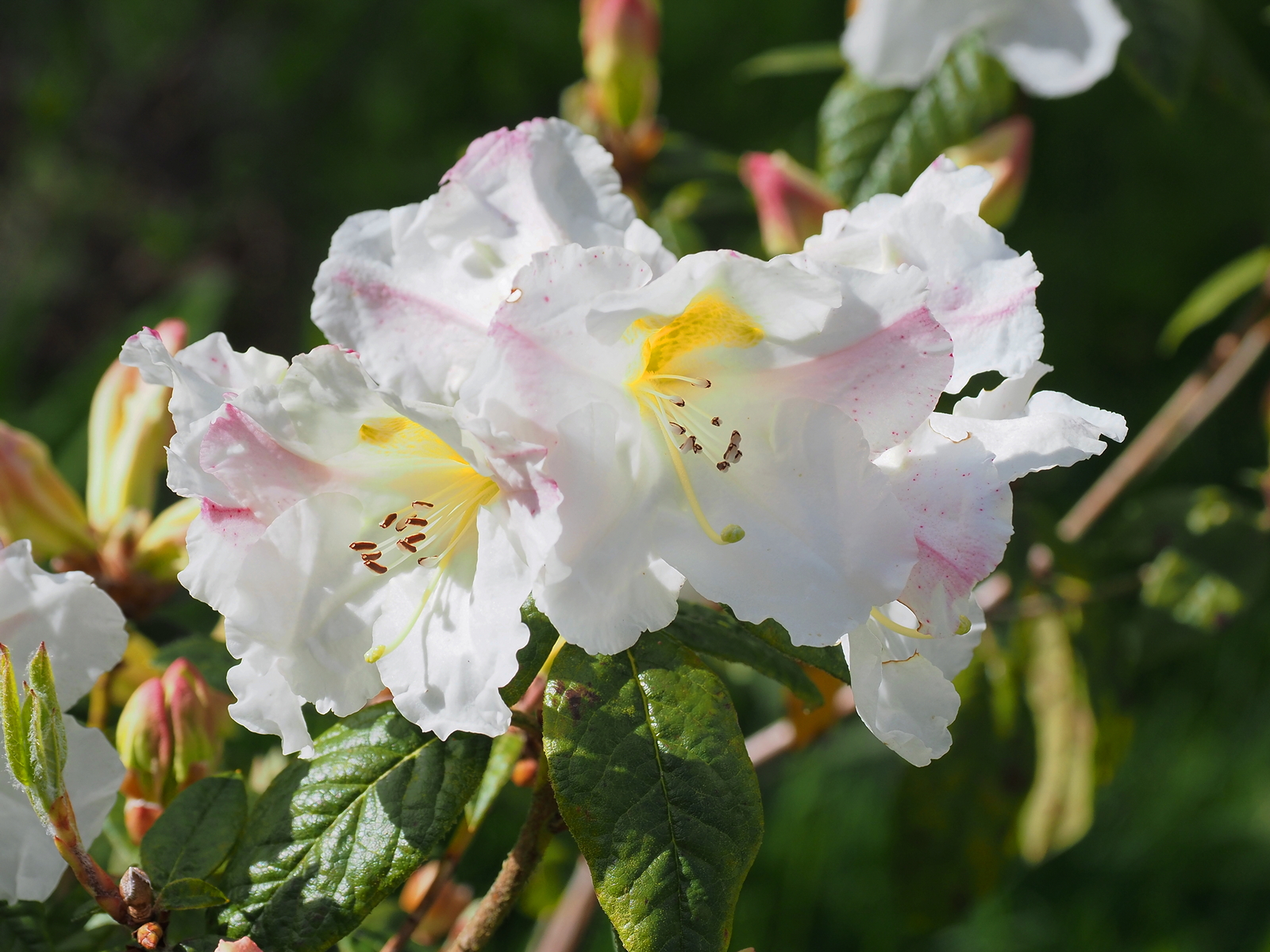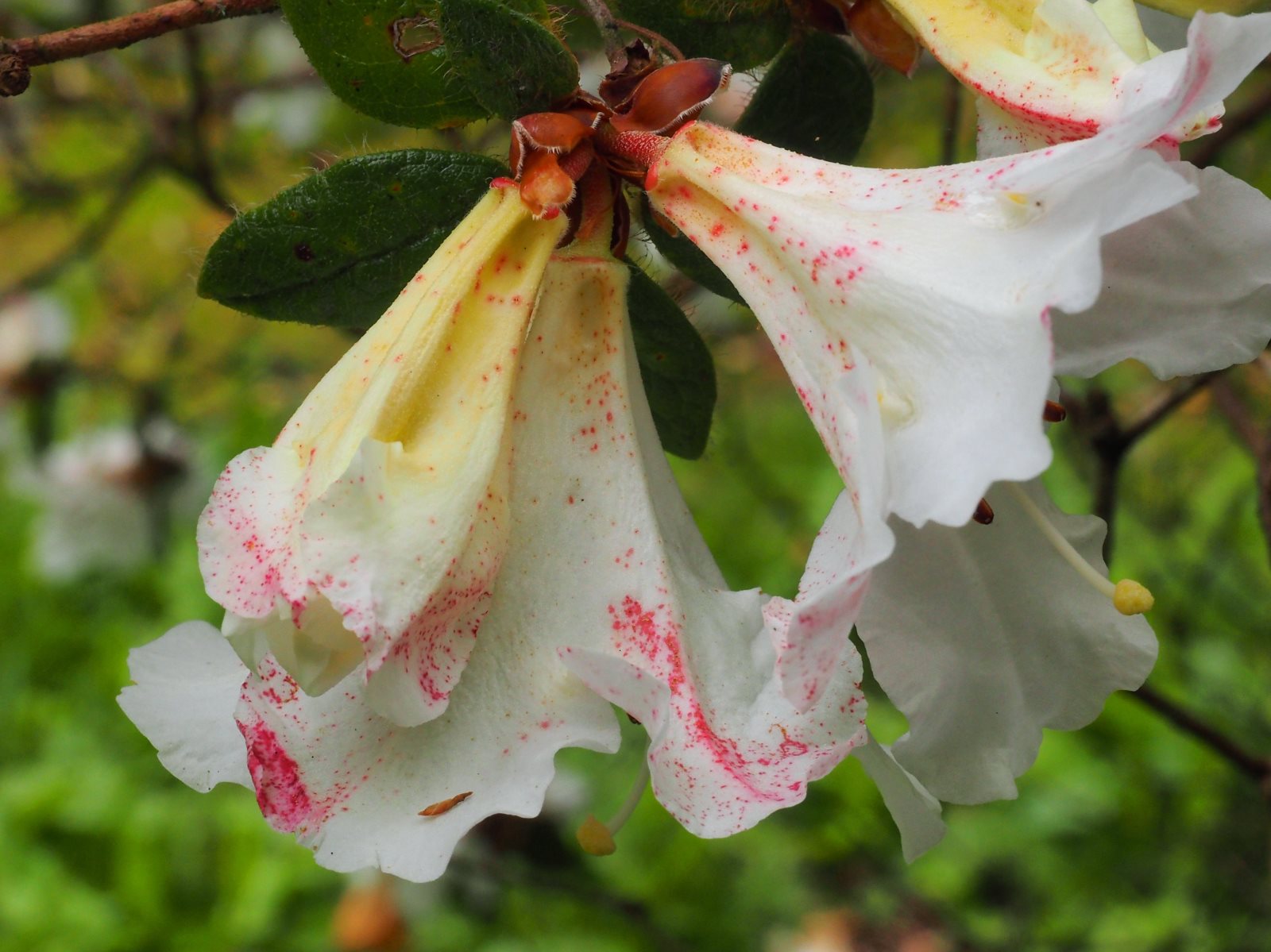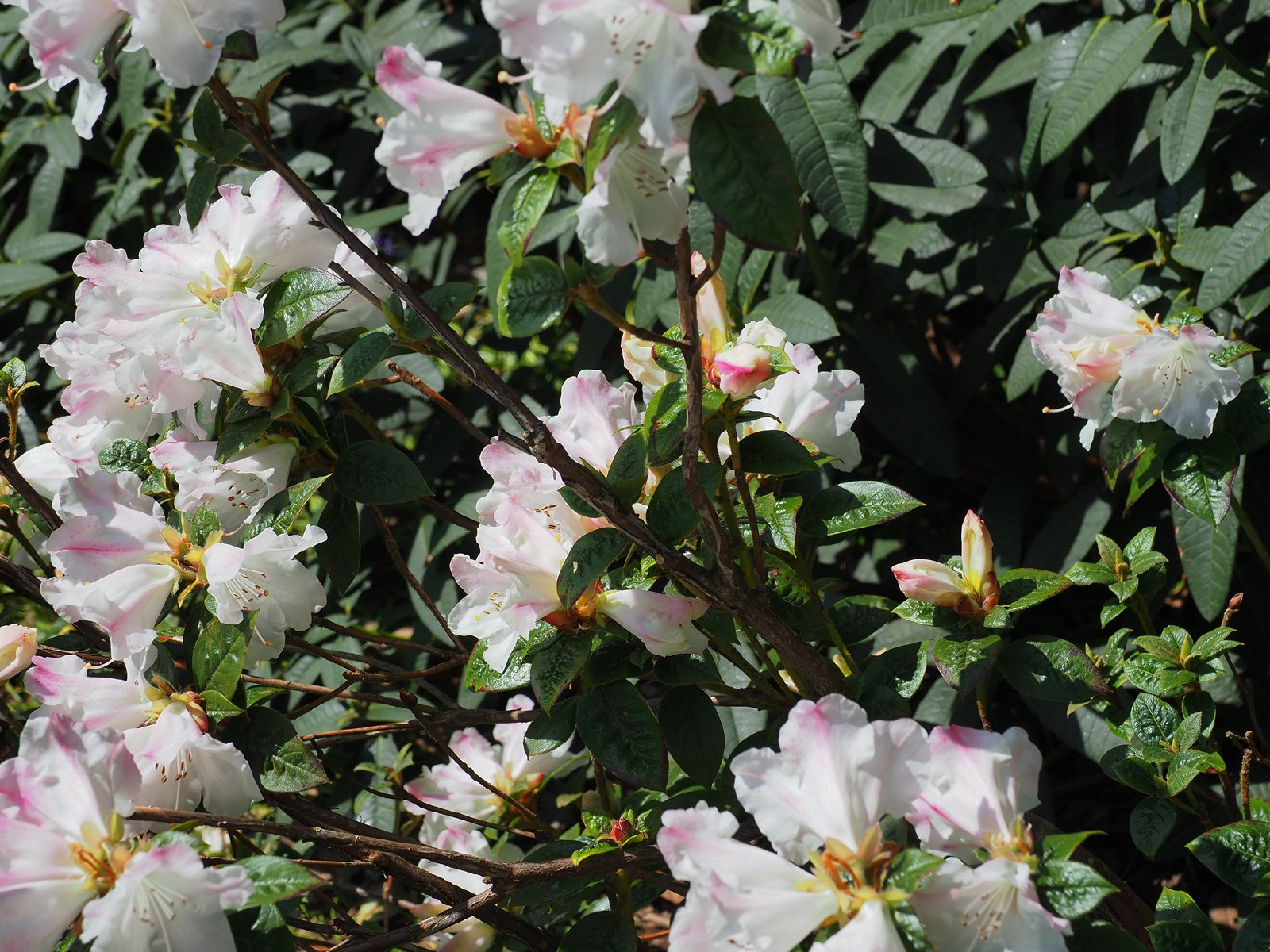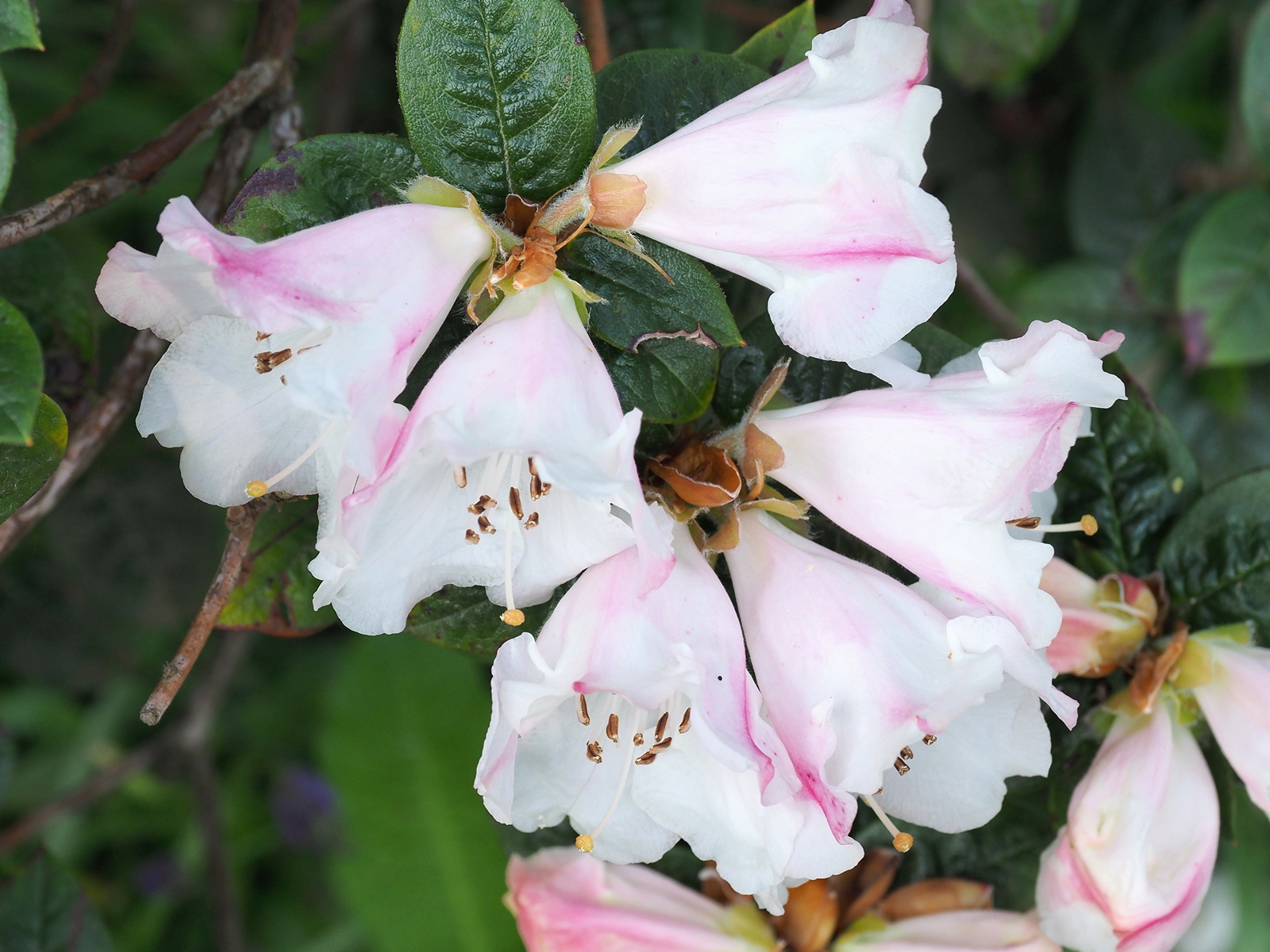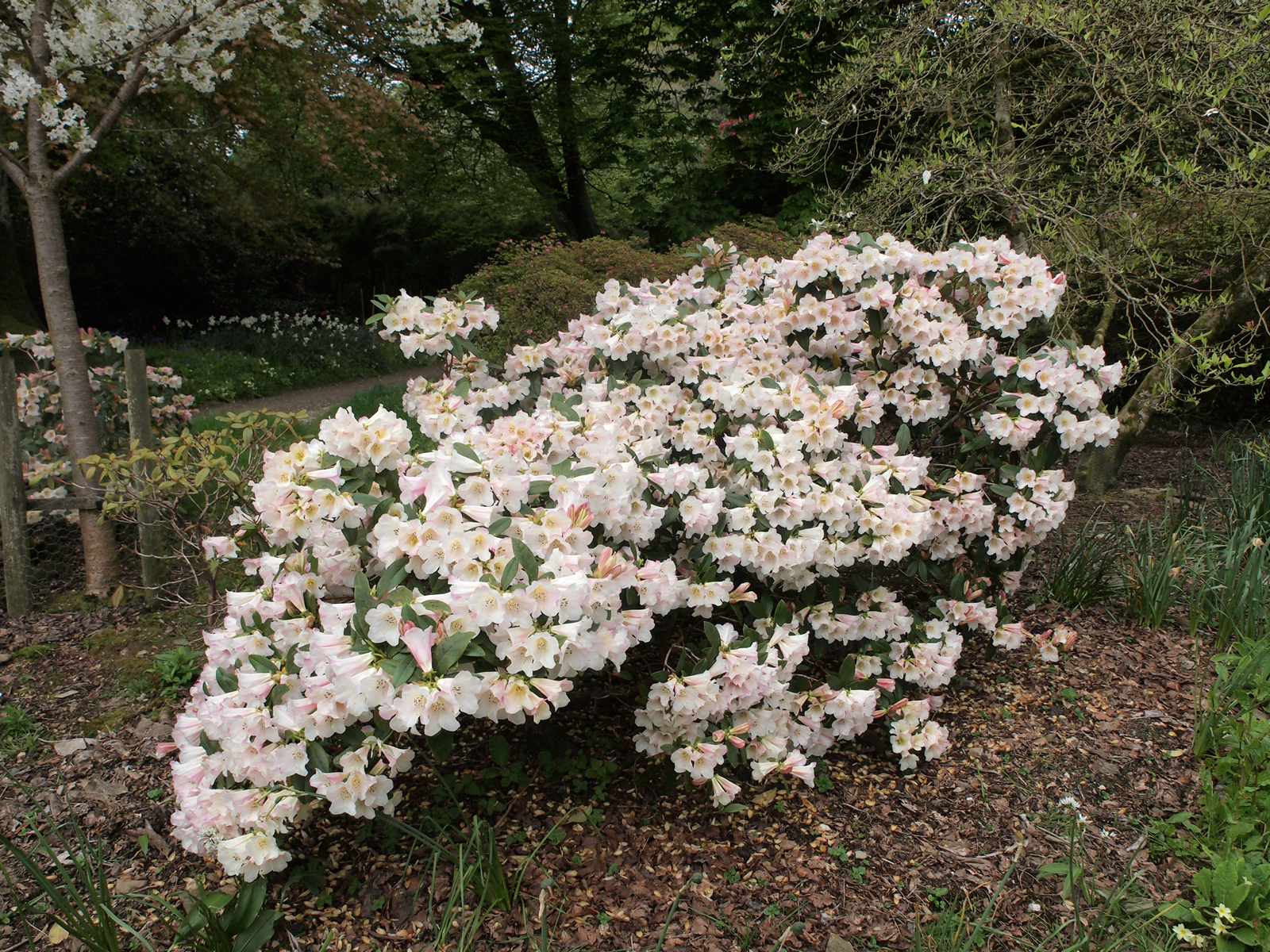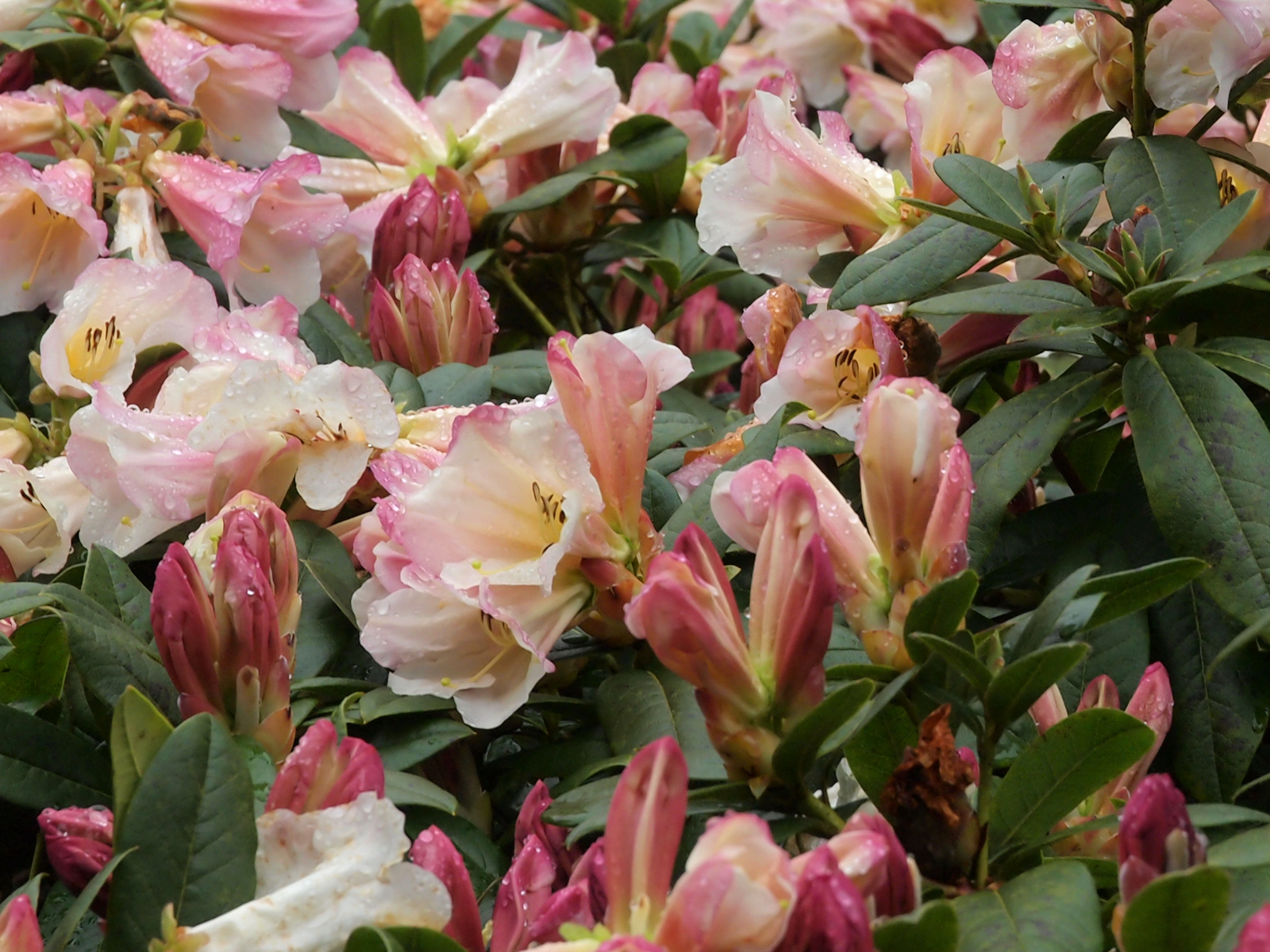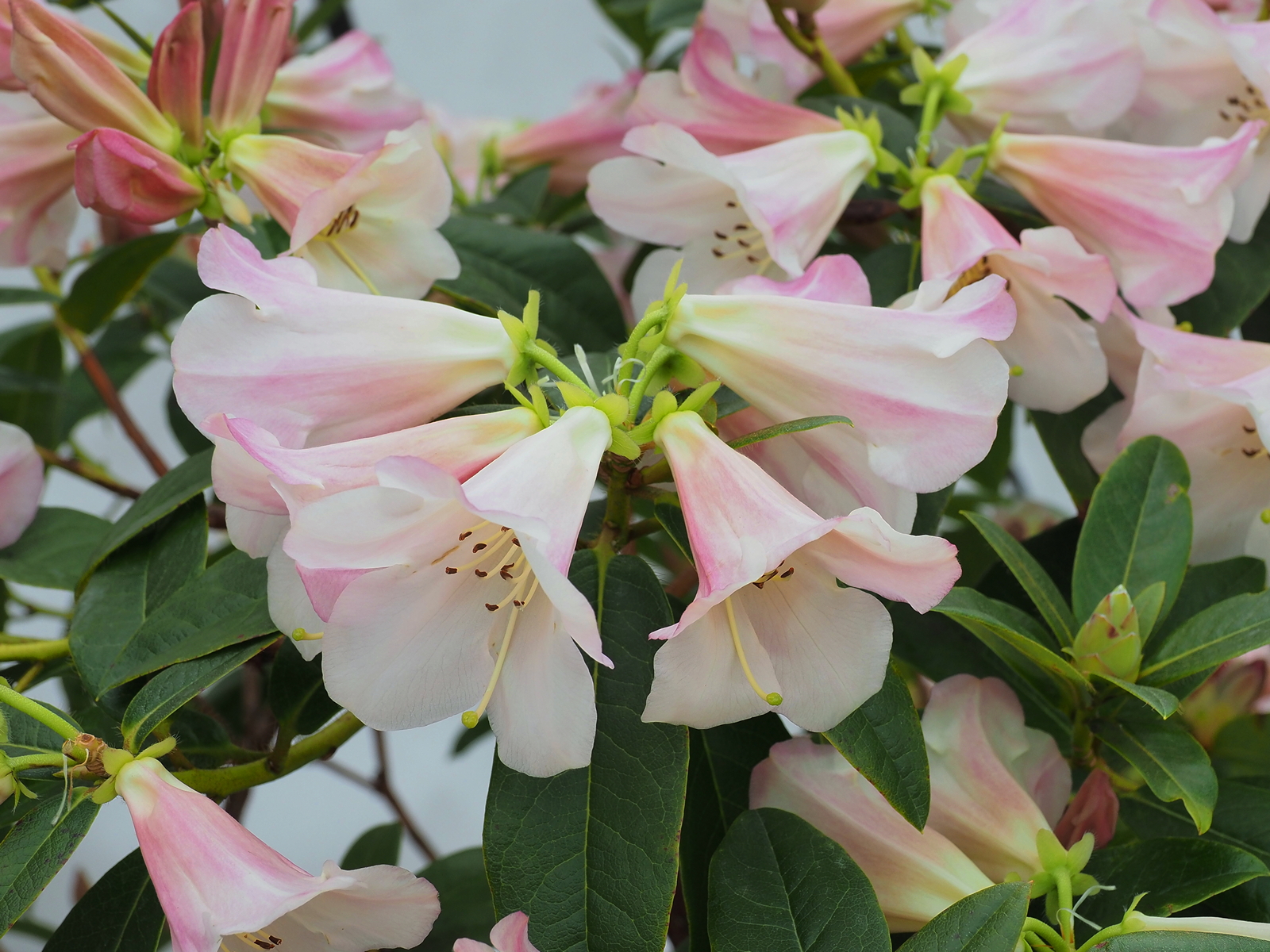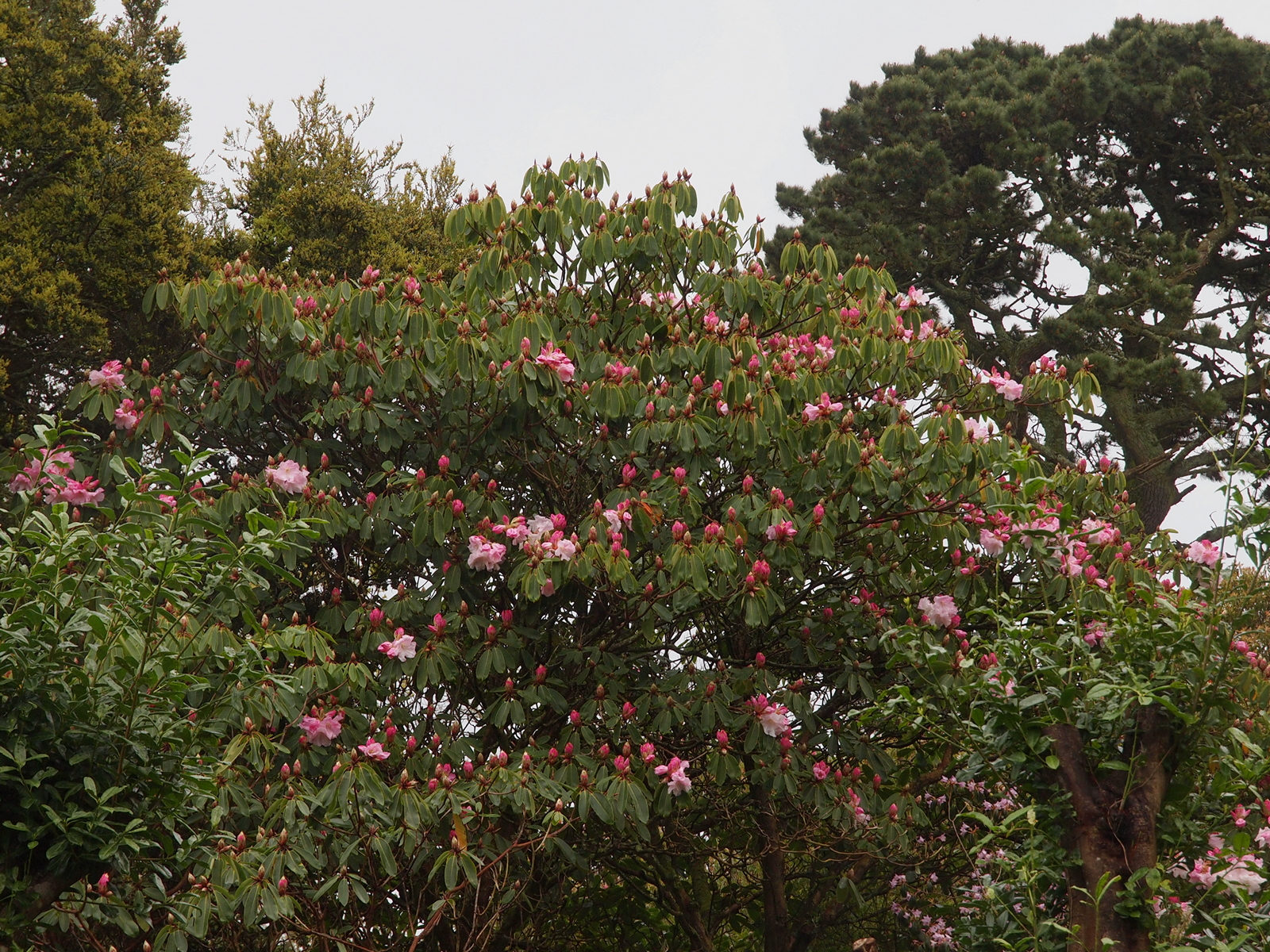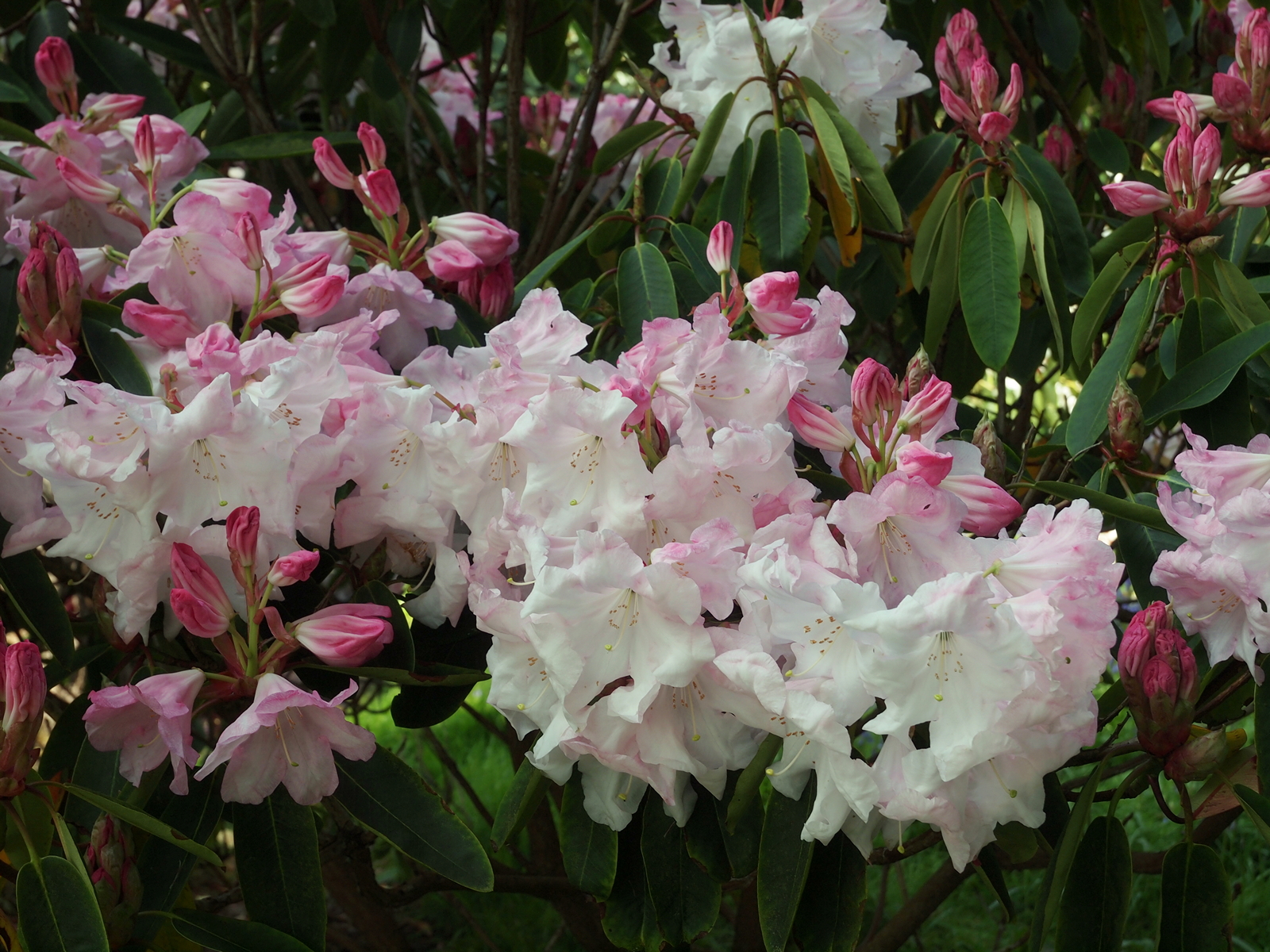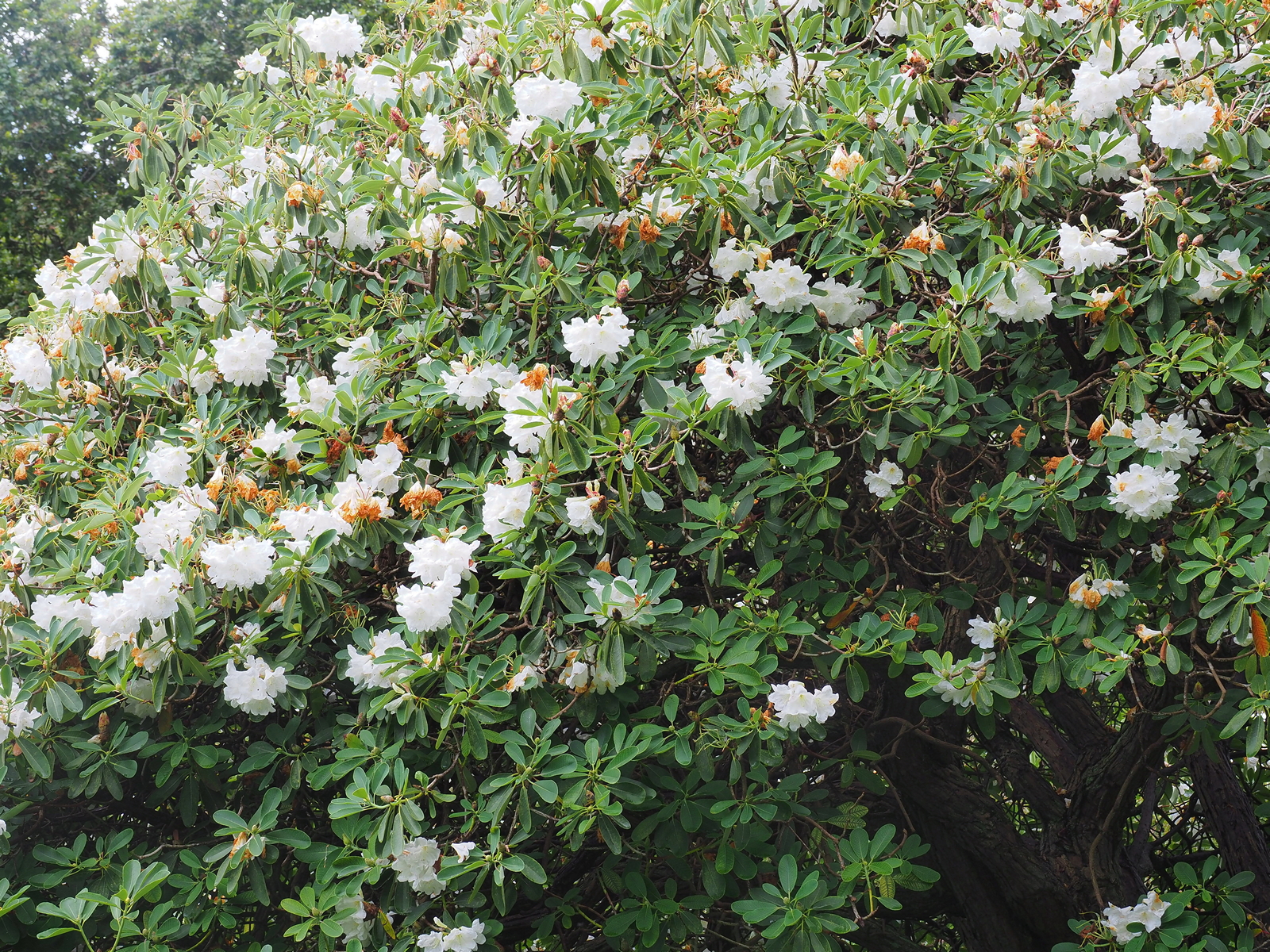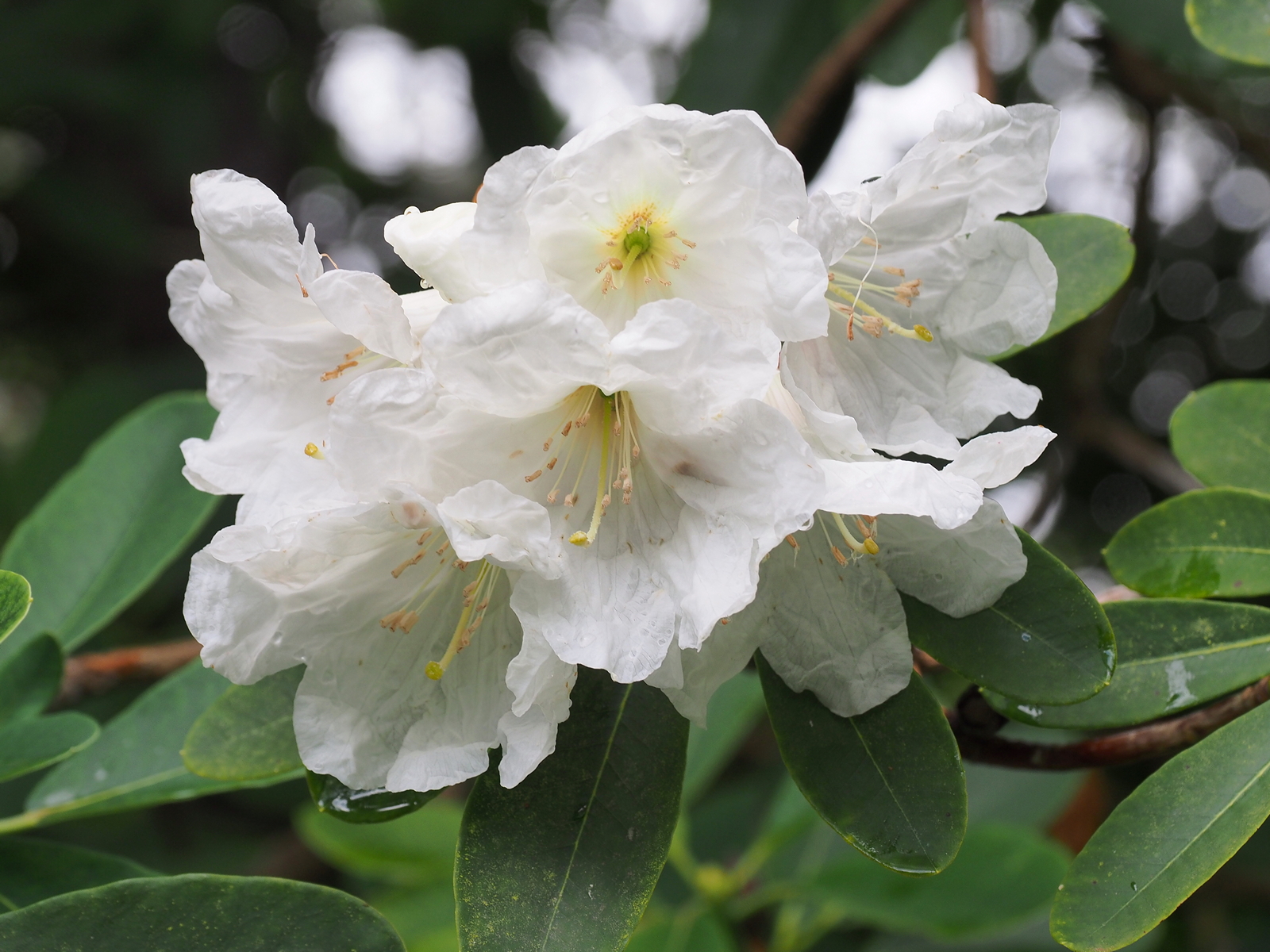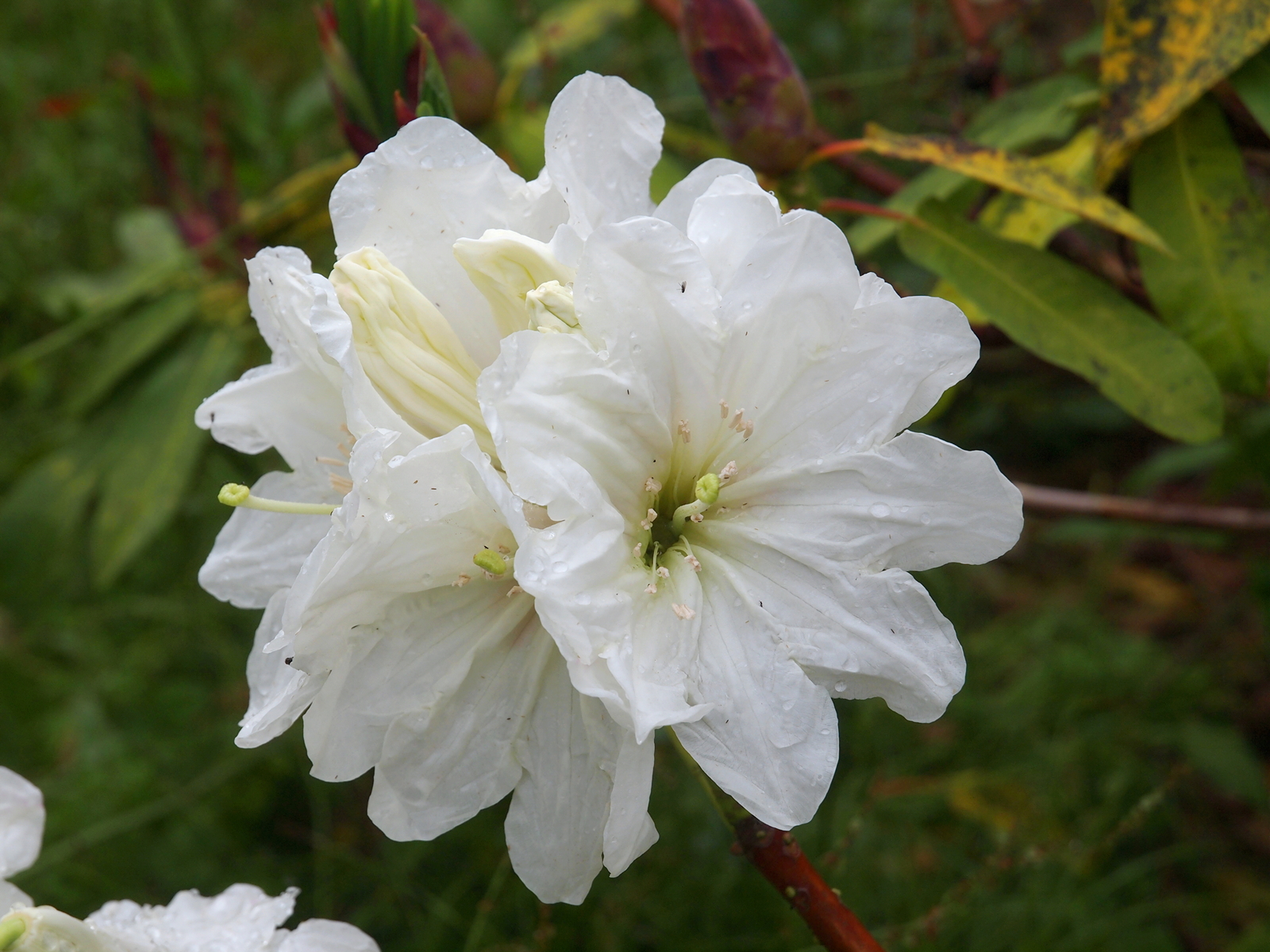RHS Lecture
Scented Rhododendrons by Charles Williams (“The Smellies”)
RHS Lecture by Charles Williams (“The Smellies”)
There are about 650 species of rhododendrons growing in temperate climates but I intend here to refer to just a few of them. They are all later flowering, suitable for smaller gardens because they do not grow very tall, and very deeply scented because they rely on insects for pollination and these insects can only thrive in late spring or early summer. We refer to them as the `smellies’ and, as you would soon tell if you get close to one in flower, they certainly live up to their reputation. Before we get too carried away though these plants are all short lived and tender. The very act of flowering so prolifically seems to stunt their growth and limit their life span. While they thrive in Southern English counties they need full shelter from the wind and especially the east wind. To other parts of the country they are therefore patio plants or plants for the cool conservatory. They are not house plants as such but many of our mail order customers here at Burncoose order them to grow on in their greenhouses and then bring them into the house for the 3 weeks or so when they are actually in flower.
I have made some sweeping generalisations but it is now probably best to turn to the plants themselves and point out their key characteristics for identification purposes before moving on to talk about how to look after these plants for best effect.
There are two types of rhododendrons. Those with scaly leaves which we call LEPIDOTE and those with non scaly leaves which we call ELEPIDOTE. All our subjects today are non-scaly and can therefore be crossed with each other. Scaly and non scaly cannot.
1. Rhododendron burmanicum
This species comes from SW Burma on a mountain called Victoria. It was growing in Dublin Botanic Garden by 1914 but not widely known until collected by Frank Kingdom Ward in 1956. It grows on the margins of forests at about 9,000 feet. Here it is only 3-4 feet tall buy very free flowering. It is relevant to this article as one of the parents of many of the scented yellow rhododendron hybrids described later.
2. My second subject is a hybrid of 2 species Rhododendron edgeworthii x Rhododendron leucaspis. As yet it has no cultivar name. (A hybrid is generally given a name when it is formally registered with the RHS.)Its relevance is that edgeworthii is another of the parents of several of the other hybrids you will discover later in this article. Rhododendron edgeworthii was discovered by Hooker in Sikkim in 1849. It grows on cliffs and rocks and on humus covered boulders and it can be epiphytic in that it will sometimes actually grow out of another plant. In fact it is recorded by Farrer as growing in the tops of trees in the alpine zone. It is a variable species which can be white or pink and have very hard bullate upper surface to the leaf. Rhododenron leucaspis was discovered by Kingdom Ward in SE Tibet where it grows as a bushy under shrub. Leucaspis flowers too early to be highly scented but this cross most definitely is.
3. Rhododendron cubittii
This species is quite unmistakable in that it has smooth brown flaking bark. It was introduced by a Mr Cubitt in 1909 and, as we now know grows to about 6 feet. Flowers can be white or flushed pink. It comes only from one place in Burma and is therefore of borderline hardiness outside Cornwall or the West Coast of Scotland unless you believe that warm winters and global warming are here to stay.
4. Rhododendron crassum AM 1938
First discovered by Abbe Delavay in 1885 in West Yunnan. It grows in very varied habitats in thickets, among scrub and even on rocky slopes. It can be in spruce forests or among bamboo clumps. It was first introduced to Caerhays soon after 1906 when discovered by George Forrest. There are 12 different forms of this species which is no great surprise as a result of what I have told you. It is hardier than some smellies and can be propagated very easily indeed from cuttings.
5. Rhododendron polyandrum
This species, which is very similar to Rhododendron crassum, was discovered in Bhutan in 1914 – they did not stop the plant collecting trips simply because of the war – and by Kingdom Ward in 1925. It grows on hill tops and up to 10,000 feet. Its branches have a slightly twisted effect and, with us, it is pinker in bud than crassum but perhaps whiter when fully open. It is just as hardy and scented as Rhododendron crassum.
6. Rhododendron megacalyx
This species grows rather taller than the other scented rhododendron species and can get to 25 feet. It is however borderline even in Cornwall and one of the first to die in a cold winter. Despite this it is easy to grow from seed and seems to come true. It was found by Kingdom Ward in Upper Burma in 1914 but its range extends across to Tibet. It grows in rain forests by streams and on the forest margins up to 13,000 feet! Quite why it is so tender I cannot say. The main characteristic of this plant is its huge and unmistakable calyx around the flower.
7. Rhododendron nuttallii – (formerly sino-nuttallii)
This is a really tender plant which we can only grow in the conservatory at Burncoose. It flowers a bit later in the year than the other species and is a very floppy grower but its flowers are HUGE. It comes from Assam which will be no surprise and it grows in swamps. It has peculiar wrinkled leaves and attractive purple new growth. It was awarded an FCC when exhibited by a Highgate nursery as early as 1864. For all I have said about its tenderness I have seen it growing in full shade in a garden in North Cheshire. It normally has 12 flowers in each enormous truss and is generally regarded as one of the very best of the smellies but only really for the connoisseur. There are much easier plants to grow.
8. Rhododendron johnstoneanum AM 1934
A rather more common species and a great favourite for many people.It can be white or pink or yellow and there are even semi double forms. These semi doubles are very tender and have died out here but you can see them at Trewidden Gardens. You will appreciate that the plant takes its name from George Johnston of Trewithen.
9. Rhododendron rhabdotum
This is many peoples favourite smellie although it is short lived and has as scruffy a habit as any of them apart from perhaps Rhododendron lindleyi. This plant used to grow in profusion in the Rockery at Caerhays but has long since died out there. This is one of the very last rhodos to flower in June or July. Greenish in bud the flowers open a creamy white with 5 very pronounced red stripes on huge trumpets. Quite a show stopper if you have never seen it before. You may by now be getting the message that what you gain in flowers and smell with this group of rhododendrons you lose in designer form or shape. Rhododendron rhabdotum comes from the border between Assam and Bhutan and was another Kingdom Ward introduction from 1925.
10. Rhododendron formosum
In contrast a rather early flowerer. It has unmistakably pointed leaves and is therefore very easily identifiable. It is one of the easiest and least demanding of the smellie species to grow. It was found originally in 1815 in Assam where it grows on windswept hill sides. It is often also known as gibsonii who first introduced it into the UK and we do have a form at Burncoose with slightly more rounded leaves which takes this name. It received an AM when exhibited by Edinburgh Botanic Gardens in 1960.
11. Rhododendron lindleyi
This species is perhaps many peoples runner up as the favourite smellie not just for its scent but also for pureness of colour and sheer size of flower. The flowers are slightly greenish-yellow in bud but open a pure (Dulux dog paint) white. The species will not grow at all from cuttings and requires great skill and attention from a professional propagator to germinate and grow on the tiny seeds. It is one of those plants which if you plant in fives you may get a couple to survive into maturity and flower after say 4-6 years. The species has an erect but straggly habit and can grow to 6 or 8 feet in semi shade. It comes from Tibet and in the magnolia forests of Sikkim where it grows on rocks.
When you cross 2 species or a hybrid and a species you get what is known as ‘hybrid vigour’. So the best recommendation is to stick with the hybrids if you are a beginner as they are easier to grow than the species. I am only going to mention a few of the very best which have direct Caerhays connections.
12. Rhododendron ‘Michael’s Pride’ (Rh. burmanicaum x Rh. dalhousiae)
Named after Charles Michael one of the (only) 4 head gardeners who have managed the gardens at Caerhays for the last 108 years. You will see now why I have included Rhododendron burmanicum as in the species list that is where the yellow but not the scent comes from. This Caerhays hybrid was first registered in 1964. It is later flowering and we usually cut it for the Burncoose stand at Chelsea in late May. It grows to 5 – 6 feet eventually and is an absolute picture when fully out. The flowers are greenish-yellow in bud opening yellow and eventually fading to cream in a hot May. It is a much hardier plant than either of its parents with a good rounded habit and grows to about 6 feet in height.
12A. Rhododendron ‘Saffron Queen’ (Rh. burmanicum x Rh. xanthostephanum)
This totally hardy hybrid was bred by Charles Williams, the author’s great uncle. It is not generally regarded as a true smellie but its numerous trusses of pure yellow flowers do have some scent.In Cornwall it flowers in mid May and has the added attraction of attractive peeling bark.
13. Rhododendron ‘Fragrantissimum’ (Rh. edgeworthii x Rh. formosum)
FCC 1868 AGM 2002
One of the most fragrant shrubs in existence and, despite its name, it is not a species although many assume that it is. The flowers are predominantly white in large trusses with large frilly edges and flashes of rose pink which can vary. The plant is easily propagated from soft new growth cuttings in July and August but the plant has an uncontrollably leggy habit. Pruning makes no impact on this ungainly habit since, if you prune a single stem to produce several shoots, the plant will defy you and again produce a single leader. This is not a truly hardy plant nor does it have longevity. North of Birmingham it is probably best treated as a conservatory plant but, if planted outside in milder climates, it is best concentrated in large clumps so the smell can be appreciated.
14. Rhododendron ‘Lady Alice Fitzwilliam’ (Rh. edgeworthii x Rh. ciliatum)
FCC 1881 AGM 2002
This hybrid has a habit very like Rhododendron ‘Fragrantissimum’ but it is bushier and usually has more pinkish-red on the buds and flowers. As a flower it is sometimes hard to see the difference with Rhododendron ‘Fragrantissium’ but out in the garden much more readily identifiable. The plant also has a distinct nutmeg fragrance.Lady Alice likes being grown in full sun and is heat tolerant. It is just as good a plant as Fragrantissimum but perhaps slightly less well known.
15. Rhododendron ‘Bert’s Own’ (Rh. leucaspis x Rh. ‘Lady Alice Fitzwilliam’)
This is a Caerhays hybrid which we have taken to Chelsea several times but have never got it to the show bench in good enough condition for an award. Flowers can vary from trumpet to trumpet and truss to truss. They can be virtually pure white or over 50% pink and there are normally only two or three flowers in each truss. The hybrid has very distinct dark green leaves with orangeish indumentum on the undersides. It grows to 4 or 5 feet only and will tolerate shade but it is not likely to be terribly hardy.
16. Rhododenron ‘Princess Alice’ (Rh. edgeworthii x Rh. ciliatum)
A distinct compact habit with pointed dark green leaves and white flowers tinged pink. Another Caerhays plant which is again not hugely different from ‘Lady Alice’ or ‘Bert’s Own’ but is perhaps more widely grown as its compact habit and relatively slow growth rate makes it a very suitable pot plant.
17. Rhododendron ‘Countess of Haddington’ (Rh. ciliatum x Rh. dalhousiae)
FCC 1862 AGM 2002
This hybrid very hairy edges to the leaves and grows to about 5ft but with a similar spread. In marked contrast to just about every other smellie it has a very rounded growth habit but, conversely, is more of an early flowerer and generally over by May. The flowers are greenish and pink in bud opening white or greenish white with pale rose stripes. For sheer floriforousness and fragrance it is my first choice as a smellie hybrid BUT the fragrance is only noticeable when the anthers are pollen bearing which is not all the time that it is out.There are often accusations that this is not a true hybrid of the smellie range and it is true that some years the reproductive parts of the flower set damaged by wind or frost so there is no fragrance. However on a fine good sunny day in April there is not better value scented rhododendron.
18. Rhododendron ‘Loderi King George’ (Rh. Loderi Group) FCC 2002 AGM 2002
By way of contrast to the class of relatively tender and small growing ‘smellie’ rhododendrons which we have been concentrating on in this paper, it is perhaps worth a glance at some of the other rhododendrons which are prized for their fragrance in the garden often being smelt over long distances from the plant itself. Standing out in this league table is Rh. ‘Loderi King George’ which is a Tree Register record sized tree at Caerhays with a height of over 25 feet and a similar spread. The plant is soft pink in bud opening a pure clean white and is generally considered one of the finest rhododendrons although not one for the smaller garden.
19. Rhododendron ‘Polar Bear’ (Rh. auriculatum x Rh. decorum)
FCC 1946 AGM 2002
This is the very last of the tall growing woodland garden rhododendrons to flower and its fragrance is again superb and a rival for the ‘smellies’. It has pure white flowers in large trusses with a flash of green within. The flowers are somewhat hidden within the plant so you often smell it before you see it. At Caerhays and Burncoose there are always plants in flower in July and others as late as September.

